

Travel News, tips & Stories
Travel centre, have you ever really travelled we share the latest travel news, tips, and stories, right here at the home of travel - passport travel, search all our travel articles here.

Passport Travel
Since 1988, we have been specialising in travel to the more exotic destinations of the world. we all love talking about travel, sharing our experiences and helping you to realise your dreams..

Education Travel
Our team of educational travel experts has extensive personal travel experience, formal travel agents’ qualifications and backgrounds in the education system..

Travel Insurance
Flexible travel insurance for every occasion.

Vehicle Rentals
Find the vehicle you require, things you should know about travel.

Under 2 weeks before big increase in cost of an Australian Passport!
A lot of people will be focusing on the marketing them of ‘End of Financial Year Sales’, but there is

Art Deco Hotel Masterpiece Celebrates 100 years.
Aficionados of Art Deco architecture will be well rewarded with either a visit, or overnight stay at the Canberra Hyatt

Eurostar is here to make your day with Summer tickets from €39
Keep Calm Its A Bargain Start booking and saving on Summer travel on Eurostar’s most popular routes! From today until

Building a Sailing replica of William the Conquerors Flag Ship
Replicating old sailing ships is not new. Think of Tim Severin sailing his replica Welsh Leather hulled boat across the

Experience Early European Australian History On Sailing Ship Duyfken
Coming to Sydney? Group or single, experience a cruise on Sydney harbour on board the replica 17th century Dutch sailing

Bhutan Makes Entry and Travel Easier
Bhutan’s department of tourism has implemented five key strategies to drive tourism to the country referred to as the ‘Switzerland

Sleeper Trains Berlin Paris resume
Last night (Monday 11 December), a Berlin to Paris sleeper train made its debut journey after nearly a decade out

Historical Old War Office London now Luxury Hotel
Winston Churchill, Nancy Wake, General Eisenhower and James Bond author Ian Fleming walked these corridors and sat in these rooms.

Taking a Mobile Phone Overseas
Currently, snatch theft of mobile phones is at a high, especially from tourists wandering about with phone in hand. Then
Relevant Tags :
Share this:.

Enjoy Amazing Tours Around the world with Expert Guides.
- +613 9500 0444
- [email protected]
- Postal: P.O. Box 7093, Upper Ferntree Gully, Melbourne Vic 3156
You must be logged in to post a comment.
Hot flight deals for you!
Top trending holiday deals, deals recommended for you.

You're the centre of our centre
When you book with us, you know you're booking with the best in the business.

Site quick links
Help & support.

Flight Centre acknowledges the Traditional Custodians of Country throughout Australia.
© Flight Centre Travel Group Limited. ATAS Accreditation No. A10412.
*Travel restrictions & conditions apply. Review any specific conditions stated and our general terms at Terms and Conditions . Prices & taxes are correct as at the date of publication & are subject to availability and change without notice. Prices quoted are on sale until the dates specified unless otherwise stated or sold out prior. Prices are per person.
Watch CBS News
Hurricane Beryl is a historic storm. Here's why.
Updated on: July 2, 2024 / 7:25 AM EDT / CBS/AP
Hurricane Beryl , which has been lashing the southeastern Caribbean with life-threatening winds and flooding this week, made history before it even made landfall.
When Beryl strengthened into a Category 3 hurricane Sunday morning, it become the first major hurricane east of the Lesser Antilles on record for June, according to Philip Klotzbach, Colorado State University hurricane researcher.
It took Beryl only 42 hours to strengthen from a tropical depression to a major hurricane — a feat accomplished only six other times in Atlantic hurricane history, and with Sept. 1 as the previous earliest date, hurricane expert Sam Lillo said.
Beryl then gained more power, becoming the earliest Category 4 Atlantic hurricane on record and then, on July 1, the earliest to reach Category 5.
"Beryl is an extremely dangerous and rare hurricane for this time of year in this area," hurricane specialist and storm surge expert Michael Lowry said in a phone interview.

"Unusual is an understatement," he said, calling it a "historic" hurricane.
Hurricane Ivan in 2004 was the last strong hurricane to hit the southeastern Caribbean, causing catastrophic damage in Grenada as a Category 3 storm.
"So this is a serious threat, a very serious threat," Lowry said of Beryl.
Beryl amassed its strength from record-warm waters that are hotter now than they would be at the peak of hurricane season in September, he said.
Warmer oceans drive tropical cycles, which is an umbrella term encompassing both hurricanes and tropical storms. The warm waters in this case served as a source of energy for Beryl, fueling its development from a tropical storm into a major hurricane. That progression was also partly due to the fact that there wasn't a lot of wind shear in the region — a consequence of the La Niña weather pattern that's expected to arrive soon — which can help to break up and lessen storms. The lack of wind shear associated with La Niña is a factor that contributes to the intense hurricane seasons that can be seen during this phase of the climate cycle.
Most major hurricanes intensify quickly , with 170 tropical storms that have made landfall since 1980 experiencing rapid intensification. That's defined as an increase in the maximum sustained wind speeds of a tropical cyclone by at least 30 knots, or about 35 mph, over the course of 24 hours. Of the 56 tropical cyclones that have resulted in at least $1 billion in damages in the U.S. between 1980 and 2021, 73% experienced rapid intensification.
Among those weathering the storm was Jaswinderpal Parmar of Fresno, California, who had traveled to Barbados for Saturday's Twenty20 World Cup final , cricket's biggest event. He and his family were now stuck there with scores of other fans, their flights canceled on Sunday.
He said by phone that it's the first time he has experienced a hurricane, with heavy rain starting at midnight. He and his family have been praying, as well as taking calls from concerned friends and family as far away as India.
"We couldn't sleep last night," Parmar, 47, said. "We were keeping an eye on it."
Long lines formed at gas stations and grocery stores in Barbados and other islands as people rushed to prepare for the storm that rapidly intensified. Peter Corbin, 71, helped his son put up plywood to protect his home's glass doors. He said by phone that he worried about Beryl's impact on islands just east of Barbados.
"That's like a butcher cutting up a pig," he said. "They've got to make a bunker somewhere. It's going to be tough."
In St. Lucia, Prime Minister Philip J. Pierre announced a national shutdown for Sunday evening and said schools and businesses would remain closed Monday.
"Preservation and protection of life is a priority," he said.
Caribbean leaders were preparing not only for Beryl, but for a cluster of thunderstorms trailing the hurricane that had a 70% chance of becoming a tropical depression.
Beryl is the second named storm in what is forecast to be an above-average hurricane season, which runs from June 1 to Nov. 30 in the Atlantic. Earlier this month, Tropical Storm Alberto came ashore in northeastern Mexico with heavy rains that resulted in four deaths.
On Sunday evening, a tropical depression formed near the eastern Mexico coastal city of Veracruz, with the National Hurricane Center warning of flooding and mudslides.
The National Oceanic and Atmospheric Administration predicts the 2024 hurricane season is likely to be well above average , with between 17 and 25 named storms. The forecast calls for as many as 13 hurricanes and four major hurricanes.
An average Atlantic hurricane season produces 14 named storms, seven of them hurricanes and three major hurricanes.
CBS News climate producer Tracy Wholf contributed reporting.
- Hurricane Beryl
More from CBS News

Alameda County Fire officials warn of July 4th holiday heatwave fireworks risk

Wind-driven vegetation fire burns in Napa County north of Calistoga

Person dies of injuries from residential fire in San Francisco Tenderloin District

Bay Area heat wave helps create unhealthy air; Spare the Air alert issued
1 877 967 5302

Deals for everyone

Hand-picked hand-crafted hands-on vacation deals

UK & Europe

Mexico & Caribbean
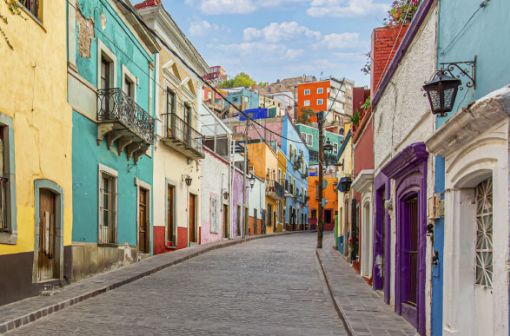
Australia & NZ

You're the centre of our centre
When you book with us, you know you're booking with the best in the business.

Site quick links
Help & support.

© Flight Centre Travel Group (Canada) Inc.
Future Travel Credit Terms & Conditions | Green Policy | Anti-Spam Policy
Disney Adventure cruise set to sail from Singapore in 2025 – here's what to expect
Advertisement.
The Disney Adventure will depart from Singapore's Marina Bay Cruise Centre beginning in 2025, for three- and four-night voyages for at least five years.
An artist concept of the Disney Adventure, which will set sail from Singapore in 2025. (Photo: Disney Cruise Line)
This audio is generated by an AI tool.

The happiest place on Earth will be so much easier to get to from next year. The Disney Adventure cruise will set sail from Singapore's Marina Bay Cruise Centre beginning in 2025, for three- and four-night voyages, for at least five years, announced Disney Cruise Line on Wednesday (Jun 26).
This is the first ship under the Disney Cruise Line to homeport in Asia, and is part of a collaboration between Disney Cruise Line and the Singapore Tourism Board.

There will be seven uniquely themed areas onboard for guests to explore, each with different beloved Disney characters.
1. DISNEY IMAGINATION GARDEN
Only with a little Disney imagination can an open-air performance venue also be an enchanted valley and charming garden.
This gathering space, inspired by Disney adventures over the last 100 years from Moana to Mowgli, will be guests' gateway into the other realms onboard the cruise.
2. DISNEY DISCOVERY REEF
In the nautical themed shopping and dining haven, expect to bump into characters from The Little Mermaid, Lilo & Stitch, Finding Nemo, and Luca.
3. SAN FRANSOKYO STREET
What would it be like living in a city with Japanese and American architecture combined – or, in other words, the central location of Disney's 2014 animated film Big Hero 6?
At least on the Disney Adventure cruise, San Fransokyo street will be a family entertainment area, comprising interactive games, shops, and cinemas.
4. WAYFINDER BAY
Here, an open-air oasis under the sun combines relaxation and entertainment. A poolside retreat inspired by the Pacific Islands artistry of Disney Animation's Moana will offer cruise guests with breathtaking views of the sea and sky.

5. TOWN SQUARE
This is the land – or fantastical forest – to be if you've always dreamt of becoming a Disney royal. Shops, lounges, cafes, restaurants and entertainment venues in this space will be fashioned after classics, including Tangled, Cinderella, Frozen, Snow White and the Seven Dwarfs, and The Princess and the Frog.
6. MARVEL LANDING
As an homage to Marvel's larger-than-life personalities, this area will offer "Avengers-level adventure" for fans of all ages, with attractions and experiences that capture "imaginative representations" of guests' favourite superheroes.
7. TOY STORY PLACE
Old school Pixar fans are in for a treat here. Guests can interact with themed food venues and water play areas, all dedicated to bringing Toy Story movies and shorts to life.
The Disney Adventure is expected to hold approximately 6,700 passengers, with around 2,500 crew members.
More details about its maiden voyage and onboard experiences will be announced in time.
Related Topics
Recommended, recent searches, trending topics, this browser is no longer supported.
We know it's a hassle to switch browsers but we want your experience with CNA to be fast, secure and the best it can possibly be.
To continue, upgrade to a supported browser or, for the finest experience, download the mobile app.
Upgraded but still having issues? Contact us
Suggested companies
Travel center, thetravelmakers.us, anywhere.com.

Travel Centre US Reviews
In the Travel Agency category
Visit this website
Company activity See all

Write a review
Reviews 4.9.
Most relevant
Highly recommend William
William gray was very kind, patient and pro-active in planning this trip for us. He was always available to answers our questions and custom-tailor our needs. Iceland is far from here, the names of the places there are confusing and sounds similar so William’s plan was very beneficial to us. I highly recommend William’s help for your travel plans. Our trip was sort of last minute but he stayed on top of it and made all the bookings. All the tours he booked for us went very smoothly and we also saw northern lights.
Date of experience : March 14, 2024
Reply from Travel Centre US
Hi Brinda, Many thanks for your amazing words of appreciation and your positive feedback on our Service. We are delighted to know that the service provided by William met your expectations. It would be an honor to assist you once again with your next reservation and we hope to hear from you very soon. Wish you the very best and stay safe Team Travel Centre
Bianca Fox was very timely in response…
Bianca Fox was very timely in response to all our questions and concerns. We were tentative after having a bad experience with our previous travel agency. Bianca was very patient with our many questions and reassured us of our choices during this process. We would gladly recommend her.
Date of experience : February 28, 2024
Hi Karen, Many thanks for your amazing words of appreciation and your positive feedback on our Service. We are delighted to know that the service provided by Bianca met your expectations. It would be an honor to assist you once again with your next reservation and we hope to hear from you very soon. Wish you the very best and stay safe Team Travel Centre
This is my second trip with travel…
This is my second trip with travel centre US. My first trip was to Iceland and we are traveling to easter island this November. This company is awesome, everything they promise they do. I am very thankful, specially with Nixon he is probably the most patient person in the world!! My trip to Iceland was perfect and I'm sure my upcoming trip to Chile will be the same. Thank you very much for all your help and for making my dream trips come true! Kenya.
Date of experience : April 04, 2024
Hi Kenya, Many thanks for your amazing words of appreciation and your positive feedback on our Service. We are delighted to know that the service provided by Nixon met your expectations. It would be an honor to assist you once again with your next reservation and we hope to hear from you very soon. Wish you the very best and stay safe Team Travel Centre
Love The Care & Attention
A childhood friend and I are planning an unforgettable trip to Dubai and Bali. Our original travel agent hadn't responded to my last couple of emails and I was growing concerned. Before I could worry, our NEW agent, William Gray, updated me that our former TA had left the company and that he (William) was taking over. William hit the ground running. He finalized our itinerary, reviewed and finalized flights and is working on a 2025 girls' trip to Italy. Thank you William!
Date of experience : January 08, 2024
Hi Dixon, Many thanks for your amazing words of appreciation and your positive feedback on our Service. We are delighted to know that the service provided by William met your expectations. It would be an honour to assist you once again with your next reservation and we hope to hear from you very soon. Wish you the very best and stay safe Team Travel Center
My experience booking with Nixon
My experience with booking a travel package to Asia with Nixon went wonderful. He helped by answering all the questions I threw at him and gave me information I didn't realize I needed. He had no problem changing any of the flights and tours I wasn't comfortable with.
Date of experience : March 23, 2024
Hi Gleydi, Many thanks for your amazing words of appreciation and your positive feedback on our Service. We are delighted to know that the service provided by Nixon met your expectations. It would be an honor to assist you once again with your next reservation and we hope to hear from you very soon. Wish you the very best and stay safe Team Travel Centre
Drake Henderson has been exceptional
Drake Henderson has been exceptional! He makes himself available and answers all our questions..even our dumb ones. I have and will continue to recommend Travelcentre.us to all my friends and family. You people are without a doubt the best!
Date of experience : March 20, 2024
Hi Patrick, Many thanks for your amazing words of appreciation and your positive feedback on our Service. We are delighted to know that the service provided by Drake met your expectations. It would be an honor to assist you once again with your next reservation and we hope to hear from you very soon. Wish you the very best and stay safe Team Travel Centre
The Rome Tour Fall 2024
My Rome Tour this Fall 2024 includes flights, accommodation and tour package was arranged by Devin Carter. I am pleased with the whole thing and process. Great experience with him and looking forward to this trip. My big appreciation for such a nice experience.
Date of experience : March 13, 2024
Hi Yolinda, Many thanks for your amazing words of appreciation and your positive feedback on our Service. We are delighted to know that the service provided by Devin met your expectations. It would be an honor to assist you once again with your next reservation and we hope to hear from you very soon. Wish you the very best and stay safe Team Travel Centre
Impressive service
Derek was very knowledgeable, polite and patient. We had limited time and he put together several packages that were of our interest. He was always available when we called and due to our urgency stayed late to complete our tour package. Very impressed with the service overall. Will definitely refer friends and family.
Date of experience : October 11, 2023
Hi Xavier, Many thanks for your amazing words of appreciation and your positive feedback on our Service. We are delighted to know that the service provided by Derick met your expectations. It would be an honour to assist you once again with your next reservation and we hope to hear from you very soon. Wish you the very best and stay safe Team Travel Center
Nixon was so special!
Nixon was so special!! I have a hearing problem and especially when there is an accent. He was so patient with me and repeated things with much graciousness. Employees like him are hard to find so, KEEP HIM!!!!
Date of experience : March 27, 2024
Hi Robbie, Many thanks for your amazing words of appreciation and your positive feedback on our Service. We are delighted to know that the service provided by Nixon met your expectations. It would be an honor to assist you once again with your next reservation and we hope to hear from you very soon. Wish you the very best and stay safe Team Travel Centre
Bianca was the best travel guide ever
Bianca was the best travel guide ever. From day one she made the planning process so easy for me. I literally did nothing but make the payment. The trip overall was amazing, what are great experience to bring in my 30th. So grateful!
Date of experience : March 25, 2024
Hi Mayorca, Many thanks for your amazing words of appreciation and your positive feedback on our Service. We are delighted to know that the service provided by Bianca met your expectations. It would be an honor to assist you once again with your next reservation and we hope to hear from you very soon. Wish you the very best and stay safe Team Travel Centre
William anticipated questions and…
William anticipated questions and answered them before asked. He sought the excursions that matched our request and even did some shopping for us to find the best and cheapest flights
Date of experience : March 10, 2024
Hi Kim, Many thanks for your amazing words of appreciation and your positive feedback on our Service. We are delighted to know that the service provided by William met your expectations. It would be an honor to assist you once again with your next reservation and we hope to hear from you very soon. Wish you the very best and stay safe Team Travel Centre
Eric Miles was very helpful and…
Eric Miles was very helpful and knowledgeable in booking our future Japan trip for the Cherry Blossoms adventure from start to finish. I would recommend Travel Centre US to book your future vacations. We will use their services first before looking for other vacation packages.
Date of experience : February 23, 2024
Hi Winston, Many thanks for your amazing words of appreciation and your positive feedback on our Service. We are delighted to know that the service provided by Eric met your expectations. It would be an honor to assist you once again with your next reservation and we hope to hear from you very soon. Wish you the very best and stay safe Team Travel Centre
Our first time using a Travel agency and William was great!
Our travel agent is William. He was very helpful during our planning process. He answered all of our questions and made sure that we were getting the best deal for our trip. He made himself available via email, text and phone. I would refer him to others as well and use him for future travel plans.
Date of experience : April 02, 2024
Hi Charlette, Many thanks for your amazing words of appreciation and your positive feedback on our Service. We are delighted to know that the service provided by William met your expectations. It would be an honor to assist you once again with your next reservation and we hope to hear from you very soon. Wish you the very best and stay safe Team Travel Centre
Be specific on your objective. For smooth travel, consult, Mr. Derek Statham
Mr. Derek Statham is a Travelmaster travel agent. His expertise and experience plus his patience are the tools for slacks free travel. Anytime you plan to travel anywhere in the world. Seek Mr. Derek Statham.
Date of experience : August 22, 2023
Hi Diomedes, Many thanks for your amazing words of appreciation and your positive feedback on our Service. We are delighted to know that the service provided by Derek met your expectations. It would be an honor to assist you once again with your next reservation and we hope to hear from you very soon. Wish you the very best and stay safe Team Travel Centre
Everything was perfectly planned.
Bianca planned the perfect trip to Bali for my birthday. All of our tours included a driver who was knowledgeable about the culture and any other questions we had were answered. I highly recommend Bianca and the team.the tour guides were always on time. No details were missed. Don’t hesitate to book. I will be using Bianca for all my travel planning moving forward.
Date of experience : December 03, 2023
Hi Ruth, Many thanks for your amazing words of appreciation and your positive feedback on our Service. We are delighted to know that the service provided by Bianca met your expectations. It would be an honour to assist you once again with your next reservation and we hope to hear from you very soon. Wish you the very best and stay safe Team Travel Center
Great service
Nixon was great, very patient and answered all my questions. He was able to customize our dream vacation
Date of experience : May 15, 2024
Hi Claudia, Many thanks for your amazing words of appreciation and your positive feedback on our Service. We are delighted to know that the service provided by Nixon met your expectations. It would be an honor to assist you once again with your next reservation and we hope to hear from you very soon. Wish you the very best and stay safe Team Travel Centre
This is NOT a scam
When I first booked with them, I thought this might possibly be a scam. This was not the case, quite the opposite. I booked a trip to Iceland with them from Jan 28-Feb 2. I had Eric Miles helping me out with the process of what I needed to know about booking with them. He was very patient with all my questions and helped me in all my uncertainties. He was there informing me about cancellation and rebooking of my excursions. I knew before hand Iceland weather was unpredictable and did not fault Eric or the local tours for these inconveniences. Even when my flight was canceled to the weather, Eric was on standby helping me get the information I needed even when everything happened so fast and last minute. Would definitely travel with Travel Centre again!
Date of experience : January 27, 2024
Hi Kevin, Many thanks for your amazing words of appreciation and your positive feedback on our Service. We are delighted to know that the service provided by Eric met your expectations. It would be an honour to assist you once again with your next reservation and we hope to hear from you very soon. Wish you the very best and stay safe Team Travel Center
Book with Travel Centre for a great Vacation
I want to Start off by Saying Travel Centre made my 25 Year Anniversary a experience we will never forget. Drake was our rep and he found us a great Accommodation. They booked us on Emirates Airline which was an amazing experience in itself. Believe it or not we looked forward to the long flight Home. Thank you your expertise in taking care of all the details...
Date of experience : October 24, 2022
Hi Esteban, Many thanks for your amazing words of appreciation and your positive feedback on our Service. We are delighted to know that the service provided by Drake met your expectations. It would be an honour to assist you once again with your next reservation and we hope to hear from you very soon. Wish you the very best and stay safe Team Travel Center
My experience with Travel Centre US was…
My experience with Travel Centre US was great thanks to Drake Henderson. Mr. Henderson was incredibly helpful and knowledgeable about everything Bali, Indonesia . We picked a resort of our liking and Mr. Henderson came up with an inclusive package plan for us and tour. We had a 50:55 phone call duration coming up with flights , which airline is comfortable for us , and the right resort for our vacation stay. Because of his patience today after a month of looking at flight and resort price from American Airlines and others we were please to booked with Travel Centre US and get lucky that Mr. Henderson was our booking agent . Now I can relax and not be stressed out about our upcoming Bali trip.
Date of experience : October 12, 2023
Hi Soraya, Many thanks for your amazing words of appreciation and your positive feedback on our Service. We are delighted to know that the service provided by Drake met your expectations. It would be an honour to assist you once again with your next reservation and we hope to hear from you very soon. Wish you the very best and stay safe Team Travel Center
Excellent Service
At first I was a bit nervous booking online my husband and my tickets. Drake was so professional and patient with me and answered all my questions. I felt safe and while booking he patiently walked me thru the entire process. Thank you Drake and will always contact you whenever I am traveling.
Date of experience : October 03, 2023
Hi Kay, Many thanks for your amazing words of appreciation and your positive feedback on our Service. We are delighted to know that the service provided by Drake met your expectations. It would be an honour to assist you once again with your next reservation and we hope to hear from you very soon. Wish you the very best and stay safe Team Travel Center
- 1-888-381-8132
- [email protected]
KNOW US MORE FOR A CONFIDENT TRAVEL EXPERIENCE!
About travel centre.
Everyone has a story. You meet people, see places, learn new facets of life you didn't know existed - everything we just mentioned is stuck in one of the pages of your life, and luckily, we'll be waiting for you when you get to that chapter.
Travel Centre is the sister company of Travel Center UK. Both companies were born as a result of the 37-year excellency of their parent company, Moresand, one of the highly reputed travel agencies in the UK.
We work with several international airlines, nonaligned, to provide unbiased advice on making your journey better. That's not all, though!
Our brand focuses on high-quality travel products & well-planned getaways tuned to your very own budget, but we also have the contentment in providing our customers with the most-sought after in-house discounts and exclusive promotions.
At Travel Centre, it's all about making you happy. It's about making the process of preparation as exciting as the grin-filled journey that follows. Therefore, we're always going to reach beyond the usual for you.
We make it a point to remember that every customer matter - sale or no sale, that's what makes our service different from the others.
Our ultimate goal is to work toward connecting travelers from the USA to the rest of the world. We believe that it's not just about the place. It's about how you get there too. So, why don't you join us?

To be a part of providing a transformative travel experience for our customers and become the world's most trusted & innovative travel agency.

To add an unmatchable value to your vacations by providing quality touristic services through transparent, honest, sustainable travel and customer experience.

What We Represent
Experience.
Regardless of what kind of vacation you book, Travel Centre will help you find your way to a relaxed take-off. We create memories tailored to your needs and take care of everything else that stands in the way.
Confidence!
Travel Centre works toward giving well-planned escapes to the rest of the world from the United States of America. We guarantee incredible rates suited to your budget, high-quality travel products and above all, the hassle-free booking experience everyone craves.
Our travel experts are equipped with a vast amount of knowledge about the travel industry. Therefore, they are readily available to help you iron out any wrinkles in your vacation plans.

We strive to provide you with a wide variety of carefully hand-picked destinations, tailored to suit your budget and travel fantasies. Whether you are looking for an extensive adventure, tailor-made multi-center vacation, or a wholesome tour experience, we are here to provide you with the best of all. At Travel Centre, your expectations are our standard goals. We never let you settle for less.
tailor-made multi-center vacation, or a wholesome tour experience, we are here to provide you with the best of all. At Travel Centre, your expectations are our standard goals. We never let you settle for less.

Owned & Operated by Friendly Norfolk Island Locals

We Can Help You Plan These Norfolk Island Experiences
Bring Your Group
Escorted Holidays
Conferences
Customised Travel
Tours And Activities
Hot Deals - valid for selected travel dates up until 31 March 2025
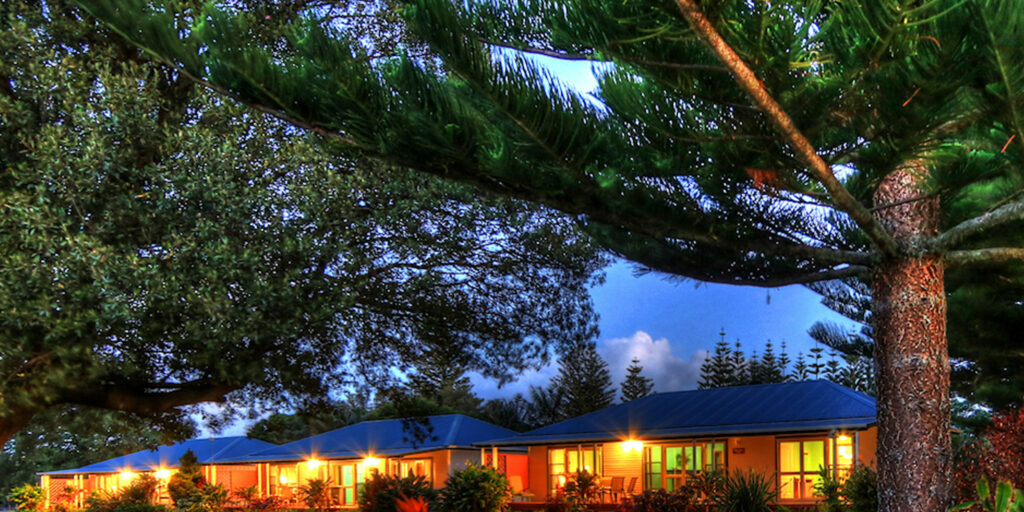
Trade Winds Country Cottages
Country-style cottages sit on extensive gardens that grow fresh produce available for guest use, Trade Winds Country Cottages offer the perfect island and country escape combined.
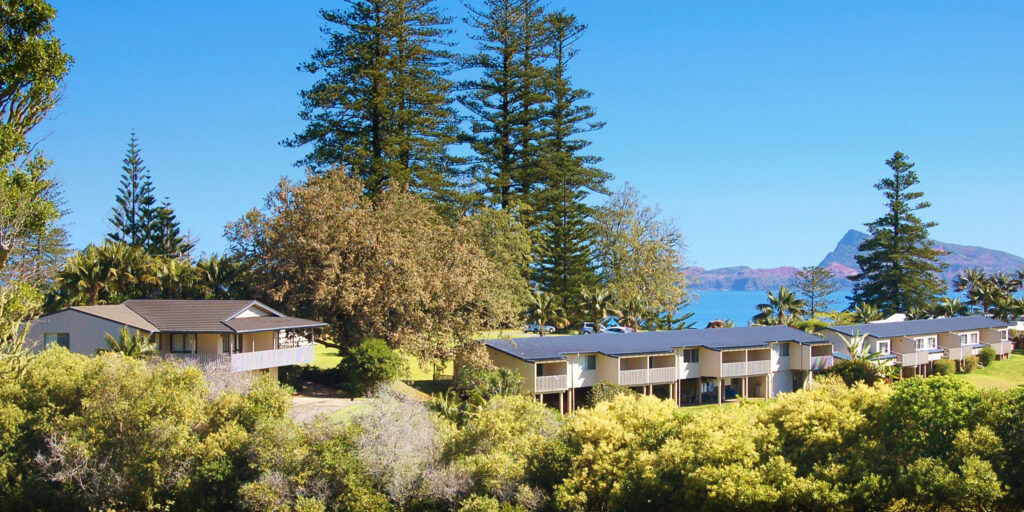
Crest Apartments
SAVE $500 per couple if booked by 8 July 2024. Valid for travel selected dates.
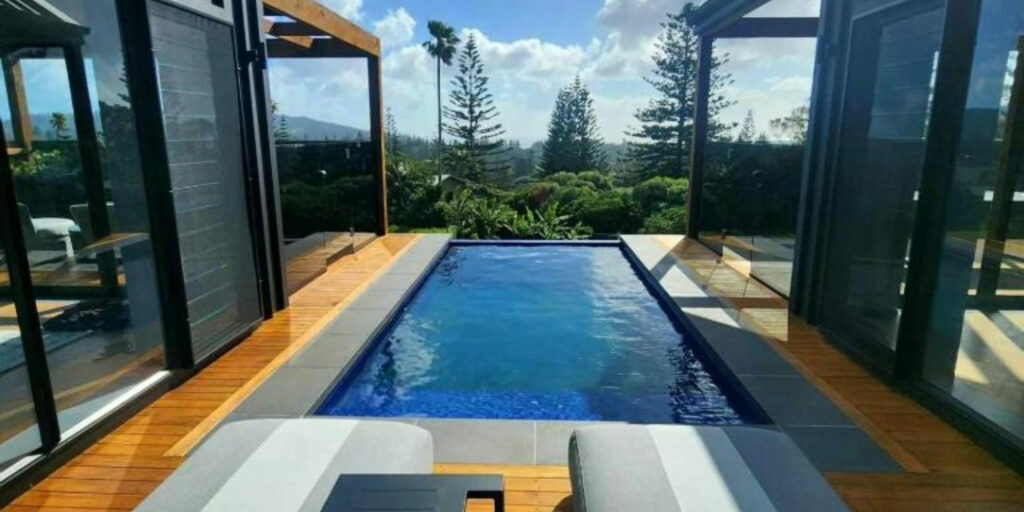

Glencar Luxury Villas
Glencar Luxury Villas is the ultimate 5 star adults only property on Norfolk Island. With awe inspiring views over the countryside towards Mount Pitt and the ocean, these One Bedroom Villas are perfect for relaxation and escape from the every day.
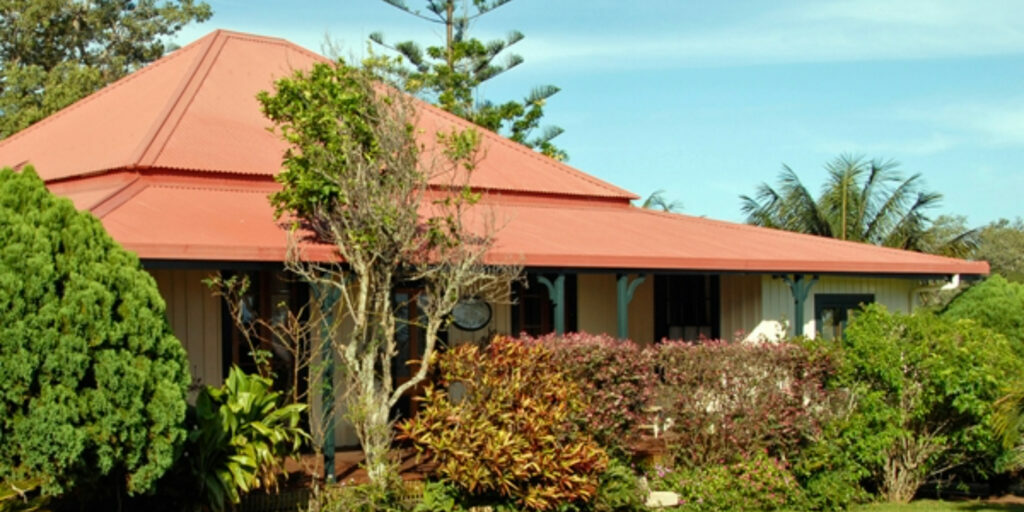
Christian’s of Bucks Point
SAVE $1,840 per group of six if booked by 30 September 2024 and discover the rich history of this 3 bedroom heritage house.
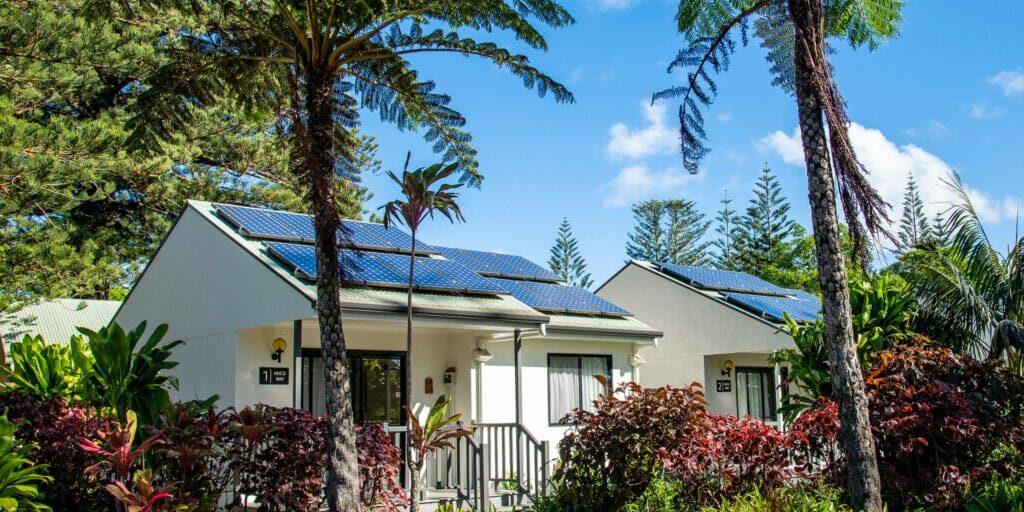
Governor’s Lodge
Discover resort-style accommodation at Governor’s Lodge. Close to town and the sights of Kingston, yet set on 12 acres of subtropical gardens offering the perfect Norfolk Island escape.
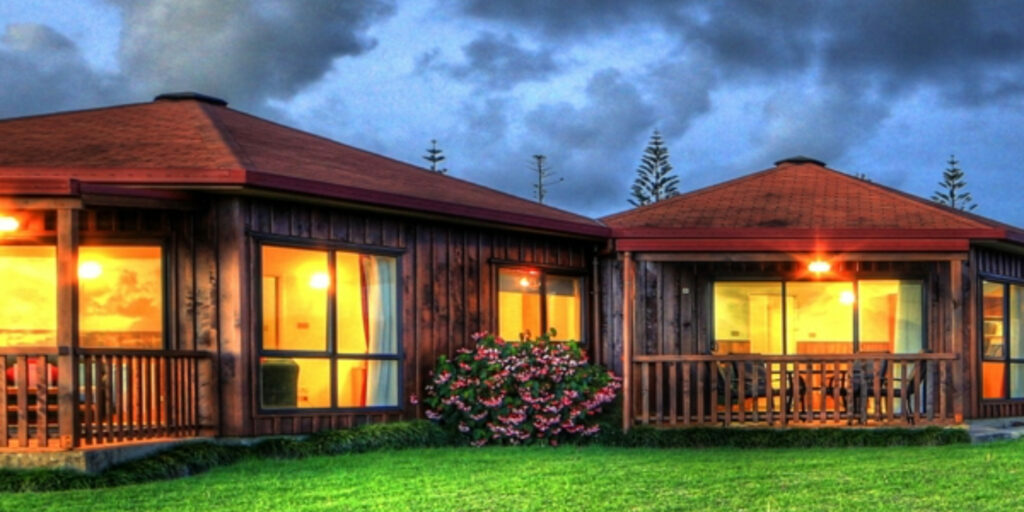
Ocean Breeze Cottages
SAVE $555 per couple if booked and travelled by 31 August 2024. Valid for travel 01 June 2024 to 31 August 2024.
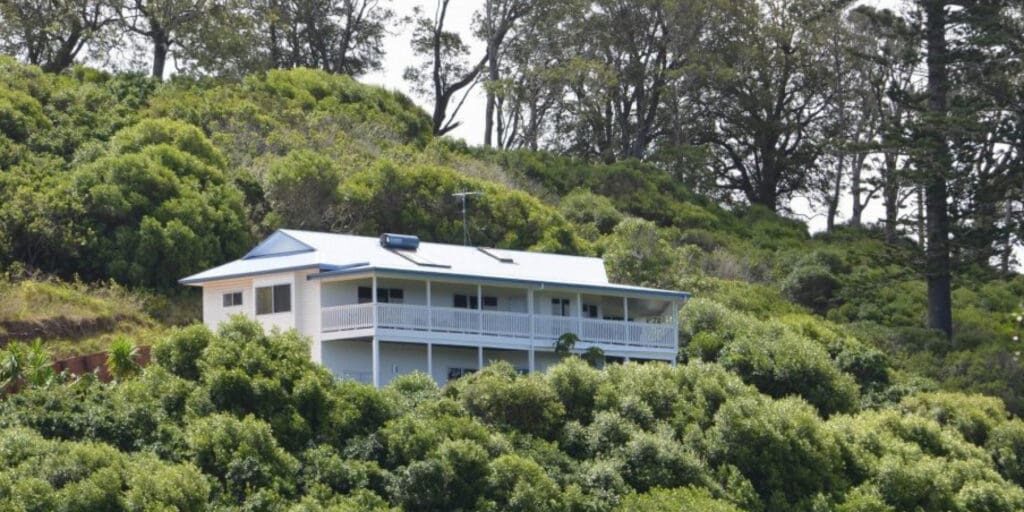
The White House
Located in the prestigious Buck’s Point area, this Presidential, 5-bedroom, 3.5 bathroom hillside ocean view spa villa is for your Exclusive Indulgence – no other guests or neighbours.
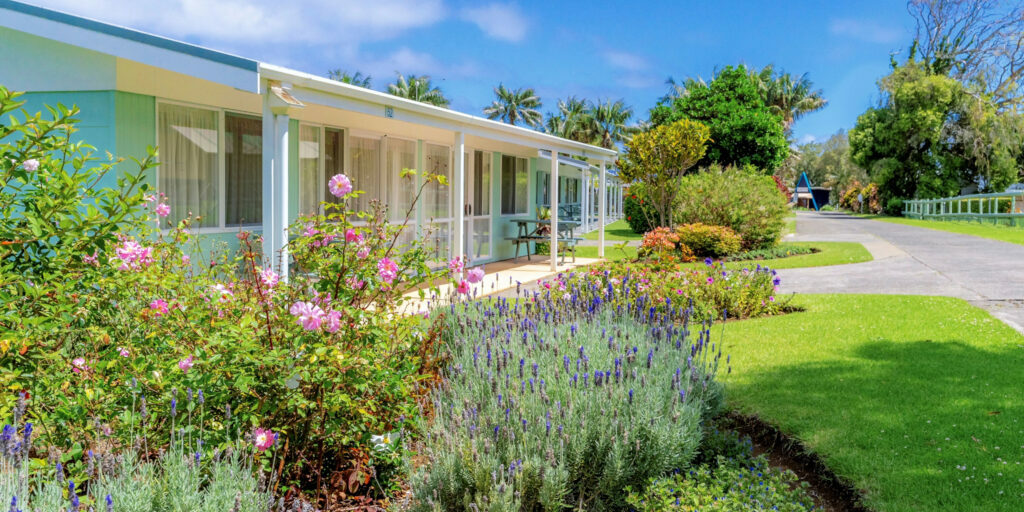
Aloha Apartments
Stay 7 nights at centrally located Aloha Apartments Norfolk Island. Relax and unwind in a fully self contained apartment that offers all the comforts and conveniences of home.

Whitewood Sea
SAVE $230 per couple if booked and travelled by 31 August 2024. Valid for travel 01 June 2024 to 31 August 2024.
There's Always Something Happening
Garden week & the royal agriculture and horticultural show 2024.

Meet Our Team
We’re a local team with local knowledge. Everyone in our team is either born-and-bred on Norfolk, or has lived here for many years. From planning to arrival, you will work closely with one of our local professionals.
Why Norfolk Island Should be Your Next Pacific Island Holiday
Within a breathtakingly beautiful environment experience snorkelling in turquoise waters over coral reef, soaking up history in a World Heritage listed area and exploring a unique local culture.

Beryl becomes 'extremely dangerous' Category 4 hurricane expected to bring life-threatening conditions to Caribbean
Hurricane Beryl has become an "extremely dangerous" Category 4 storm as it inches closer to the Windward Islands, bringing life-threatening winds and storm surge to the Caribbean, the National Hurricane Center said Sunday.
Beryl expanded its strength for two days, reaching Category 4 strength on a scale of 5 on Sunday before leveling off, the center said in a late-afternoon advisory.
With sustained winds of 130 mph, the storm was likely to be a destructive force through the early week as it aimed for a possible clash with Mexico's Yucatán peninsula around next weekend, according to the hurricane center.
"Fluctuations in strength are common in major hurricanes in conducive environments, and it is expected that Beryl will also fluctuate in strength for the next day or so," the center said in a separate forecast discussion. "There is high confidence that Beryl will remain an extremely dangerous hurricane through landfall in the Windward Islands."
Its center is expected to move across the Windward Islands early Monday, with hurricane conditions, including heavy rain, expected Sunday evening, the agency said.
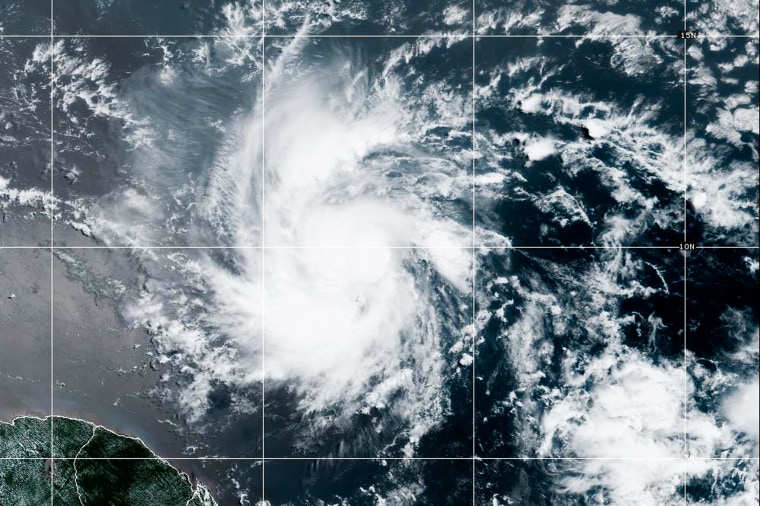
The Windward Islands include St. Lucia, St. Vincent and the Grenadines, Grenada and Martinique. As of Sunday night, Beryl was about 200 miles southeast of Barbados with maximum sustained winds of 130 mph. It was moving northwest at around 18 mph.
A U.S. hurricane warning is in effect for Barbados, St. Lucia, St. Vincent and the Grenadines, Grenada and Tobago, where hurricane conditions are possible starting early Monday.
The government of Barbados began opening emergency shelters Sunday evening and ordered all businesses to close by 7 p.m. The Barbados Water Authority asked residents to store potable water as it would shut down water lines across the island Sunday night as a precaution, according to a statement.
The Barbados government said the center of the hurricane would travel 75 to 80 miles south of Barbados sometime Monday morning.
Government forecasters said the hurricane could pulse with renewed strength as it passes beneath Barbados, with winds associated with the storm projected to reach near 145 mph.
Flash flooding and hurricane-force winds are likely, the government said. Barbados officials also warned of a low pressure system behind Beryl that could become a tropical depression and affect the country Wednesday if it continues apace.
A tropical storm warning is in effect for Martinique, and tropical storm watches are in effect for Dominica and Trinidad, which could all experience tropical storm conditions Sunday night.
“Potentially catastrophic wind damage is expected where the eyewall of Beryl moves through portions of the Windward Islands, with the highest risk of the core in St. Vincent and the Grenadines, and Grenada,” the hurricane center said.
Life-threatening storm surges may raise water levels by 6 to 9 feet above normal tide levels in the hurricane watch areas and bring destructive waves to the coast.
Three to 6 inches of rain is possible across Barbados and the Windward Islands on Sunday into Monday, which may cause flooding in some areas. Up to 10 inches of rain is possible in some areas, especially in the Grenadines.
St. Lucia Prime Minister Philip J. Pierre announced a national shutdown as a result of the hurricane warning that will go into effect Sunday 8:30 p.m. local time. He did not say when it will be lifted. Schools will remain closed Monday, and “employers are expected to cooperate,” he said.
In a Facebook post, the Saint Lucia Tourism Authority asked the public to “remain indoors and away from glass windows once tropical hurricane-force winds affect the area.”
“All persons should avoid entering the ocean. Failure to comply with this request puts human lives at risk, including those of our first responders,” the board said. The board also encouraged tourists to contact their airlines to schedule flights home.
The Royal Saint Lucia Police Force has canceled all police leave in preparation for Beryl.
“All officers are requested to report to the nearest police station by 6:00 p.m. today, Sunday, June 30, 2024,” it s a id on Fa cebook .
In Grenada, a state of emergency will go into effect at 7 p.m. Sunday and remain for a week, “unless earlier revoked,” Prime Minister Dickon Mitchell said at a briefing.
The country’s National Disaster Management Agency encouraged the public to secure three days of nonperishable food and water as Beryl makes impact. Those in areas susceptible to storm surge were encouraged to move to one of the shelters opened across Grenada.
Mitchell warned the public that “this is not a drill.”
“We need to be calm, we need to pray, but most importantly we need to prepare,” Mitchell said.
All police leave has also been canceled in Grenada, and officers were asked to return to work, according to Mitchell.
Breaking news reporter
Dennis Romero is a breaking news reporter for NBC News Digital.
Flight Centre data show fewer term-time holidays as parents heed warning in Government’s truancy crackdown
Share this article
By Melanie Earley of RNZ
Families with school-aged children are choosing not to take their children out of school to travel, Flight Centre data has shown, as the Government cracks down on truancy .
Flight Centre New Zealand general manager Heidi Walker said it appeared the messages from the Ministry of Education were getting through to parents.
New data had shown travel bookings during the winter holidays were up 10% from last year, while travel during the school term had dropped 30%.
It comes after the Government announced in April it would start cracking down on truancy by introducing a “traffic light system” of punishments for students and their parents , including fines for parents and police referrals.
The focus included parents taking their children out of school to go on family holidays.
Changes also included daily reporting of attendance and changes to public health guidelines on when students are too sick to attend.
“What some customers are telling us is that many schools across the country now have firm rules against taking kids out of school for travel that’s not deemed as crucial,” Walker said.
Travel during the school holidays could be more expensive, Walker said, one reason parents might have chosen to go during the school term, but good deals could still be found.
“Booking well in advance would be my biggest piece of advice for those with school-age kids. Gone are the days where there would be last-minute deals to destinations.
“Though capacity has risen considerably, it’s still somewhat limited so as seats fill up, prices do inevitably go up.”
To get the best deal possible, Walker said people should try and book their travel 10 months to a year in advance.
Walker said family favourite holiday spots were still Fiji, Australia and Rarotonga, but data had shown there was a rise in some long-haul destinations including Bali, London, Los Angeles and Hawaii.
“Close-to-home destinations are always popular for families, especially when they’re limited to just a two-week trip, within the school holidays.”
Latest from New Zealand
Taupō light festival out to nail its place amongst the stars, woman fatally stabbed partner in head - tried to argue the 12cm wound was self-inflicted, ‘inappropriately pushy:’ woman followed by security guard felt afraid and pressured, leading evs in new zealand.

It's all about location for Taupō's 'magical' Winter Festival light show.

Armed police respond to Queenstown central after umbrella mistaken for firearm

How to choose a new life

Welcome to Switzerland Travel Centre! You are welcome to contact us by e-mail or by phone on +41 43 210 55 00 .

Swisstainable on the move: hotel and public transport

Hotel Offers at a Special Price

Hotel Specials in Ticino - Get 20% discount on several hotels & public transport
Book your round trip.
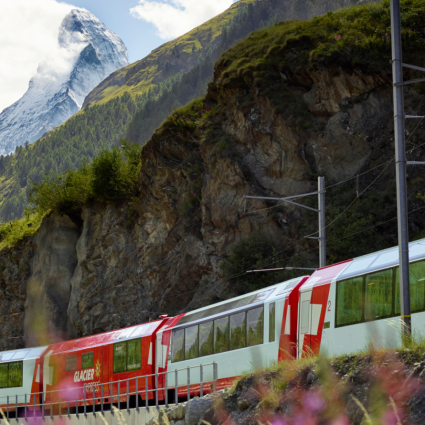
Glacier Express Classic
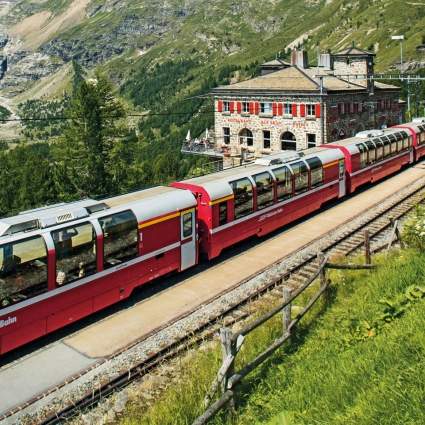
Bernina Express Classic
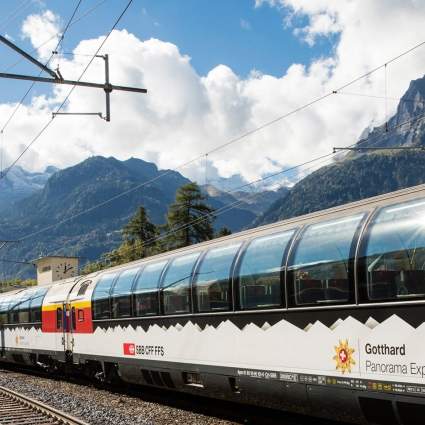
Gotthard Panorama Express - Classic
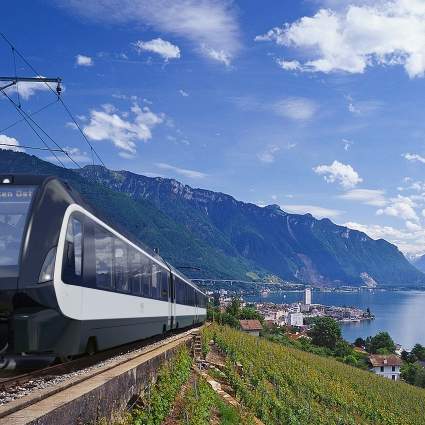
GoldenPass Tour
- Zermatt - St. Moritz
- St. Moritz - Zermatt
Your holidays in Switzerland
Central switzerland – find the essence of ‘swissness’.
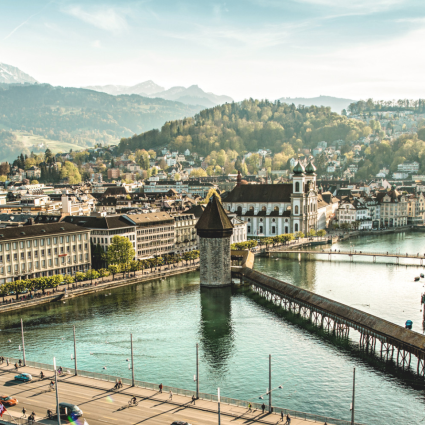
Glacier Pullman Express St. Moritz - Zermatt
Travel dates: 18.09. - 23.09.2024
This group tour is only available with a German-speaking tour guide.
Experience an exclusive rail cruise through the Swiss Alps in the luxurious Pullman Express from the 1930s. An excursion to the Gornergrat in Zermatt, a ride on the historic Furka steam train and the modern panorama car of the Bernina Express are just a few of the many highlights on this trip.
Guided group tour

Swiss Coupon Pass

Brochure 2024
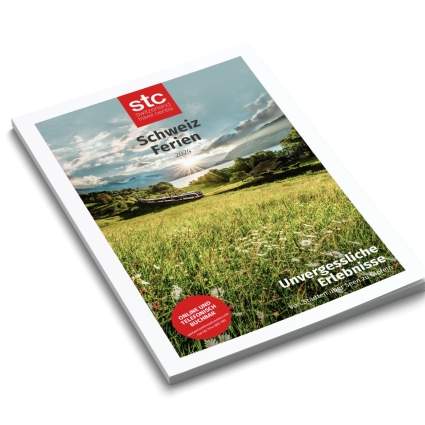
Alpine Cruise - A cruise on rails
Travel on the world-famous rails of the Bernina Express, through the UNESCO World Heritage site, stop at the gates of the Swiss National Park and cross the impressive Rhine Gorge.
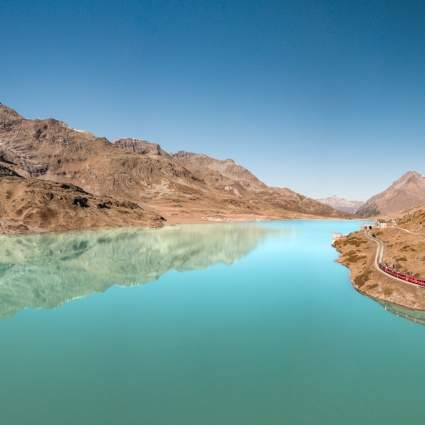
Wellness hotels
Switzerland is home to numerous beautiful wellness hotels. Relax and let yourself be pampered all around. Book your wellness hotel in Switzerland now.

No one else gives you so much Switzerland
We can put together your individual trip from a wide range of different experiences. Discover our train journeys, such as the legendary Glacier Express or the fantastic Bernina Express . Treat yourself to a short break and book on our hotel page with a selection of over 2'000 different hotels. Our Swiss Travel Passes are the perfect complement if you want to travel to Switzerland by public transport.
Welcome to TA Express Pleasanton, Texas!
Located 30 miles south of San Antonio, off I-37/Highway 97, TA Express Pleasanton is our 32nd location in the Lone Star State.
TA Express Pleasanton
Find Locations and Fuel Prices
Trucksmart App
Book Showers, Parking Spots, and Truck Repairs ahead of time in our App.
Return every traveler to the road better than they came. Lead how America's highway travelers refresh, refuel and repair.
Recent Updates
View All Updates

SCF Provides Safety Net To Driver In Need
Jun 19, 2024

SCF Makes a Difference!
Each and every professional driver represents a critical link in our country’s supply chain. That’s why when they’re in need, St. Christopher Truckers Relief Fund steps in to help make their lives better...
May 31, 2024

Summermania at TA, Petro, and TA Express
Our biggest summer celebration ever starts on 5/24/2024!
Starting May 24th, you can win daily prizes in our spin-to-win sweepstakes. Wherever the road is taking you this summer, be sure to stop at TA, Petro, or TA Express to get the most out of your trip!
May 20, 2024
Start Saving
with the TA Fleet Universal Card
Sign up today and enjoy a one-card solution for fuel, truck service, DEF, cash, ATM, scales, showers, and parking across 16,000 truck stops. Plus, get discounts on commercial fuel and truck service at TA, Petro, and TA Express locations while earning rewards through the UltraONE loyalty program.
Thank you for visiting nature.com. You are using a browser version with limited support for CSS. To obtain the best experience, we recommend you use a more up to date browser (or turn off compatibility mode in Internet Explorer). In the meantime, to ensure continued support, we are displaying the site without styles and JavaScript.
- View all journals
- My Account Login
- Explore content
- About the journal
- Publish with us
- Sign up for alerts
- Open access
- Published: 26 June 2024
Worldwide delineation of multi-tier city–regions
- Andrea Cattaneo ORCID: orcid.org/0000-0002-8845-5020 1 ,
- Serkan Girgin ORCID: orcid.org/0000-0002-0156-185X 2 ,
- Rolf de By 2 ,
- Theresa McMenomy ORCID: orcid.org/0000-0002-6100-7850 1 ,
- Andrew Nelson ORCID: orcid.org/0000-0002-7249-3778 2 &
- Sara Vaz ORCID: orcid.org/0000-0003-1263-8098 1
Nature Cities volume 1 , pages 469–479 ( 2024 ) Cite this article
737 Accesses
90 Altmetric
Metrics details
- Complex networks
- Developing world
Urban centers are pivotal in shaping societies, yet a systematic global analysis of how countries are organized around multiple urban centers is lacking. We enhance understanding by delineating city–regions worldwide, classifying over 30,000 urban centers into four tiers—town, small, intermediate and large city—based on population size and mapping their catchment areas based on travel time, differentiating between primary and secondary city–regions. Here we identify 1,403 primary city–regions employing a 3 h travel time cutoff and increasing to 4,210 with a 1 h cutoff, which is more indicative of commuting times. Our findings reveal substantial interconnectedness among urban centers and with their surrounding areas, with 3.2 billion people having physical access to multiple tiers within an hour and 4.7 billion within 3 h. Notably, among people living in or closest to towns or small cities, twice as many have easier access to intermediate than to large cities, underscoring intermediate cities’ crucial role in connecting surrounding populations. This systematic identification of city–regions globally uncovers diverse organizational patterns across urban tiers, influenced by geography, level of development and infrastructure, offering a valuable spatial dataset for regional planning, economic development and resource management.
Similar content being viewed by others
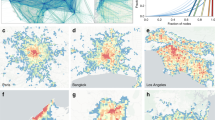
Hierarchical organization of urban mobility and its connection with city livability
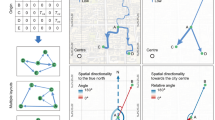
Unravelling the spatial directionality of urban mobility
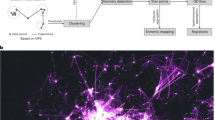
Defining a city — delineating urban areas using cell-phone data
Sustainable development requires understanding how societies are organized spatially, especially around urban centers, given that 92% of the global population either lives in an urban center or within 1 h travel time 1 . City–regions, typically intended as combinations of an urban center or centers linked to periurban areas and a rural hinterland by functional ties, are increasingly attracting the attention of academics and policymakers for the implementation of development policies 2 , 3 . However, research on city–regions frequently relies on case studies of major cities 4 , lacking a comprehensive systems perspective on the relationships between cities of varying sizes and their surrounding areas. This knowledge gap is especially pronounced between North and South and between small and large cities 4 , 5 . This study helps fill this critical knowledge gap by providing a comprehensive framework to characterize city–regions worldwide.
An urban hierarchy exists in terms of services provided by cities of different sizes (as recently conveyed by the universal visitation law of human mobility) 6 or the travel time to access such services 1 , 7 . For example, one may rely on the closest town for groceries but may commute to work in a small city and travel to a hospital in a large city for a specialized medical opinion. Acknowledging such hierarchy is particularly relevant to populations living in rural or periurban areas or smaller urban centers, whereby the size of nearby cities and their distance will affect the breadth of services and opportunities (for example, employment) available and their accessibility 8 . Recent work on the degree of urbanization has introduced vital nuance to help overcome the rural/urban dichotomy 9 . However, the possible interconnections among urban centers and their relationship with surrounding areas have not been analyzed in a systematic manner at a global level.
Against this background, this paper builds upon recent work mapping functional urban areas (FUAs) 10 and urban‒rural catchment areas (URCAs) 1 , which express the interconnection between urban centers and their surrounding rural areas. While valuable, these approaches link locations to a single urban center of reference, ignoring that a location may have multiple centers of reference for varying activities 11 . Our study introduces the concept of locations accessing multiple urban tiers; the original URCA and FUA approaches with only one urban center of reference are considered a special case.
The aim of this study is to create a comprehensive spatial representation of city–regions globally and to gain a better understanding of their diversity. In this Article, we provide a detailed worldwide representation of how people are organized around urban centers in city–regions, covering 213 countries/territories and their populations for the year 2020. Acknowledging that urban issues in the Global South are distinct from those in the Global North and the dearth of evidence on the former 12 , we further bridge this knowledge gap and illustrate the diversity of city–regions around the world by comparing Ethiopia, France, Nigeria and Pakistan (and for 86 countries in Supplementary Information ). We investigate two areas of particular importance for sustainable regional development: the relationship between urban centers and their surrounding areas and intercity relationships within city–regions. These can inform strategies to enhance connectivity to improve food systems, access to health and education services and environmental and natural resource management.
Defining city–regions
Despite a long tradition, there is no agreed-upon definition of city–regions 13 . Rodríguez-Pose summarizes existing definitions, highlighting how most have one or more core cities linked to a hinterland by functional ties such as economic, housing-market, commuting, marketing or retail catchment factors 2 .
The starting point for our perspective on city–regions is that people access different types of activities with different frequency, where ‘activities’ refers to services and employment opportunities located in urban centers. Buying groceries and commuting to work are usually done on a more frequent basis than visiting a hospital. It follows that the level of specialization of activity depends on the size of an urban center, whereby larger centers are expected to provide more specialized activities that require a lower visitation frequency (for example, airports) than smaller ones. This notion of a nested hierarchy of locations dates back to central place theory developed in the 1930s 14 and is still relevant in regional science 15 . The recent universal visitation law of human mobility is a formal expression of this intuition 6 .
In view of this, we identify city–regions based on catchment areas, in turn, based on travel time. In other words, we identify the areas delineated by the minimum travel time (up to 1, 2 or 3 h away) to access each urban tier expressing urban centers of different sizes, assumed to have different levels of specialization ( Methods ). We assume that towns of between 20,000 and 50,000 people provide basic activities, such as grocery shopping, primary healthcare services and primary schools, while incrementally more specialized activities are provided by small cities of between 50,000 and 250,000 people and intermediate cities of between 250,000 and 1 million people, while large cities of more than 1 million people provide higher-end activities such as sizeable airports and specialized hospitals. A higher tier is assumed to provide all activities provided by lower tiers.
The activities provided by urban centers of the same population size may vary greatly with context, particularly across country average income levels 16 , 17 , 18 , 19 , 20 . Nonetheless, this tiered classification can capture how larger urban centers are likely to provide more specialized activities in a given context in addition to those already provided by lower tiers. It also captures how people may rely on more than one urban center for different needs, reflecting a stratification of access to urban centers that characterizes city–regions. For instance, an individual might use a nearby town for groceries, commute to an intermediate city for work and travel to a large city for international flights. Their location will thus be part of catchment areas of three distinct urban centers. Someone living very close to a large city, in contrast, will be able to access all the above activities and belong to only the catchment area having the large city as reference.
The proposed approach allows us to delineate city–regions in an exhaustive manner by using accessibility within specified travel times to encompass urban centers within a larger center’s catchment area. Catchment areas are determined by a given travel time, whereby the longer the travel time, the broader the catchment area. A catchment area based on 1 h travel represents daily commuting potential, whereas a 3 h travel time suggests access to essential, albeit less frequent services.
This paper adopts John Parr’s conceptual framing of city–regions to provide a comprehensive, worldwide spatial representation of central place theory 13 . We identify, for all land-based locations at 30 arc-seconds resolution (approximately 1 km at the equator), the center of reference by urban tier category and the associated travel time. This is achieved using an established method that estimates the time required to reach each grid cell of the world’s surface 21 , 22 , 23 . Drawing on this dataset and providing a new approach to determine access to multiple urban centers of reference, we then combine it with the Global Human Settlement Layer—Population (GHS-POP) to allocate population to individual pixels ( Methods ). The approach is tested using three alternative population datasets ( Supplementary Information ).
Mapping access to different urban tiers
A total of 30,079 urban centers are covered: 18,619 towns, 9,440 small cities, 1,538 intermediate cities and 482 large cities. The catchment areas provide the boundaries for accessing the closest urban center in a given tier within a given travel time cutoff and, thus, determine how many city–regions of different types there are globally for the given travel time cutoff. We distinguish between primary and secondary city–regions; unlike primary city–regions, in secondary city–regions catchment areas of urban centers overlap with that of larger centers (see Table 1 for the terminology and definitions used in this paper).
We differentiate primary city–regions into four categories (from one tier to four tiers) based on how many urban tiers these span within the catchment area of the largest urban center of reference. For example, two-tier city–regions may contain any two sizes of urban centers, such as a large city surrounded by towns. The urban centers whose catchment area does not overlap with those of urban centers in other tiers are the special case of ‘single-tier city–regions’. Following Duranton, we further provide alternative delineations for parameter thresholds 24 by distinguishing between different travel-time cutoffs (1, 2 and 3 h) for the overlapping catchment areas of different urban centers.
Analyzing 30,079 urban centers, spanning 213 countries and territories, we identified 4,210 primary and 25,869 secondary city–regions with an urban center within a 1 h travel time for all locations within their catchment area, relevant for commuting (Extended Data Table 1 ). Of these, 1,524 are single tier and 2,686 are multi-tier, with 1,751 being two-tier systems. More complex city–regions are fewer, with 627 and 308 city–regions with three and four urban tiers, respectively. We note that standalone single-tier city–regions are relatively few (1,524 out of 30,079 urban centers). Most of these are towns and their surrounding areas, which are more numerous and, being the smallest urban centers considered, cannot form a multi-tier city–region with a smaller urban center.
The most common city–regions are two-tier systems centered around small cities that are also a reference center for one or more towns (1,560 within 1 h travel time). In general, the smaller the population of an urban center, the more probable that urban center is to be part of a higher-tier city–region: 95% of towns, 78% of small cities, and 56% of intermediate cities are part of a higher-tier city–region. The results for 2 and 3 h travel time cutoff—relevant for activities that may be critical but are accessed less frequently—can be viewed in Extended Data Table 1 . Using a 3 h travel time cutoff reduces fragmentation of catchment areas, making larger urban centers accessible to a broader population for activities that necessitate longer travel times between 1 and 3 h. This reduces the number of urban centers that are at the apex of a city–region for these less-frequent activities to 1,403.
Having outlined how many city–regions of different types exist worldwide, the next step is to present the global population distribution across these. Figure 1 shows the share of population living in, or within a certain travel time (1, 2 or 3 h) to the closest urban center, whether a town, small, intermediate or large city. Each column sums up to 100%, and the share above the gray boxes is the summation of all the subshares in the latter. Within the gray boxes, petal diagrams are provided to indicate the share of population that, within a given travel time, can also access urban centers in higher tiers, beyond the one they are closest to. For example, individuals for which the closest urban center is a town but where a small city may also exist within 1 h. The percentages in blue refer to the share of population with access to just one urban center within the given travel time. To illustrate, we find that 5% of the world’s population lives within 1 h from a town with no other urban center in the same vicinity (see row B). Conversely, 7% live within 1 h from a town and a small city, with the town being the closest, while 4% live closest to a town but can also access a small and an intermediate city within 1 h travel time, the small city being the closer of the two.
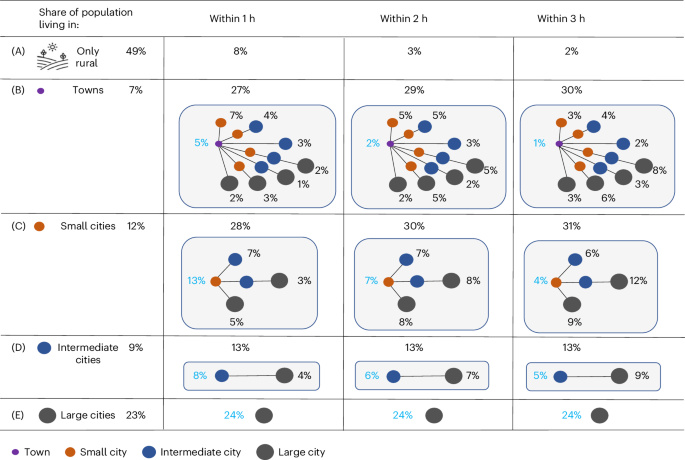
The figure presents the share of population living in or within a certain travel time of the closest urban center, broken down by size of the urban center. It is divided into four columns, each of which sums to 100% and determines the share of the population living in the core or within a certain time range—1, 2 or 3 h—of an urban center, whether a town, small, intermediate or large city. Row A refers to the share of population living in a rural area with no surrounding urban center, given travel time. Rows B–E apply to locations whereby the closest urban center is a town, small city, intermediate city or large city, respectively. Moving from left to right, the values increase with travel time as they incorporate the population in preceding columns. To illustrate, the population considered within 1 h travel time also includes those living in the core. The petal diagrams in the gray boxes differentiate the share of population with access to different urban tiers. The percentages in blue refer to the share of population with access to just one urban center within the given travel time.
Looking at row A, almost half of the world’s population lives outside an urban center (of 20,000 people or more), while only 8% have to travel more than 1 h to access an urban center. This implies that 92% of people live within a commuting distance of an urban center, a considerable contrast to Moreno-Monroy et al., who find that 53% of the population lived in FUAs 10 . This can be attributed to differences in delineation methods and to the FUA population accounting only for cells with more than 300 people km −2 , which excludes a priori 23.5% of the global population 25 . Another difference is that we consider city–regions of urban centers between 20,000 and 50,000 people, accounting for 5% of the global population (see row B of Fig. 1 , blue font, for 1 h travel).
Our findings reveal substantial interconnectedness among urban centers and with their surrounding areas: of the 7.8 billion people worldwide in 2020, 41% had physical access to multiple tiers within 1 h travel (3.2 billion) and 57% and 64% within 2 and 3 h, respectively (4.5 and 5 billion). Furthermore, out of the 92% who are within 1 h travel time from an urban center, 55% live in or closest to a town or small city and 37% to an intermediate or large city. However, many locations closest to a town or a small city also have access to a higher tier within 1 h travel time. Indeed, considering both single-tier and multi-tier access, by summing all combinations of ‘petals’ that include either an intermediate and/or large city, we find that two-thirds of the world’s population (over 5 billion people) live within 1 h travel time from one or both of these urban tiers providing more specialized activities.
The population distribution in Fig. 1 also aligns with central place theory, whereby smaller urban centers tend to gravitate around larger centers with greater economies of scale and more specialized activities. In other words, they are more likely to belong to city–regions with a larger center as reference. Indeed, more than one-third of the global population (34%) is part of city–regions with at least one intermediate or large city within 1 h travel (obtained summing all ‘petals’ in Fig. 1 with at least one intermediate or large city linked to a smaller urban center). When differentiated by level, we find that 28% of the world’s population is part of two-tier city–regions, and 13% of three tier or four tier. These shares increase to 32% and 33%, respectively, when considering 3 h travel time—encompassing 5.0 billion people. Additional results for 35 countries (representing 5.8 billion people) are illustrated in Extended Data Fig. 1 .
Among people living in or within 1 h travel time to towns or small cities, twice as many have easier access to intermediate cities (20%) than to large cities (10%). This share increases to 35% and 17%, respectively, for 3 h travel time. This occurs despite urban cores of large cities hosting more individuals (23%) than intermediate ones (9%), as can be observed in the very first column of Fig. 1 . This suggests that large cities are less relevant than smaller ones in regard to engaging populations outside their urban core for activities that can also be provided by the latter. Indeed, most people do not need frequent access to the very specialized activities provided by large cities only and, thus, may choose to live further away. Figure 1 shows that, within a 1 h travel time, two-thirds of the global population has easier access to small or intermediate cities than to large ones. Still, for the most specialized activities, accessed with lower frequency by many, large cities can be accessed by a sizeable share of the population—up to 50% for 3 h travel time, in addition to another 24% living in their core).
Global averages, however, can be misleading. To illustrate, while a relatively small share (8%) of the global population lives in rural locations that are more than 1 h away from any urban center, at the country level, this number can be far higher—well beyond 50% in countries such as Madagascar, South Sudan and Zimbabwe (Supplementary Table A1.1 ). For these populations, access to basic activities is probably more challenging. Even more worrisome are the 50% of individuals in these countries for whom access to a small city or larger requires more than 2 h (against the global average of 5%) (Supplementary Table A1.1 , adding the second and fifth column entries). For these countries, special attention may be required for regional planning and development to overcome infrastructural challenges. This focus may also apply to countries in less extreme situations, though still problematic, such as Brazil and the Russian Federation, which have populations distributed over a very large territory and for which 8–9% of the population are more than 2 h away from a small city or larger.
A closer look at city–regions in four countries
This section explores how city–regions are structured within countries, using the examples of Ethiopia, France, Nigeria and Pakistan (Fig. 2 ), chosen because they have comparable national surface area but different population sizes, physical geography and level of development and infrastructure. Figure 2 represents the spatial distribution of catchment areas composing city–regions for the four countries within 3 h travel time. The maps in the first row refer to catchment areas for accessing the closest urban center and are thus conceptually equivalent to the URCAs 1 and most relevant for activities that are typically accessed with higher frequency 1 . Spanning the four urban tiers, each tier is color-coded differently, with higher level tiers providing more specialized activities, as well as the more basic ones. Moving down in Fig. 2 , lower urban tiers are incrementally excluded, for example, in the second row, catchment areas are delineated for the closest small city or larger, in the third row for the closest intermediate city or larger and in the fourth row for the closest large city. A global version of these maps is provided in Supplementary Fig. A2.1 ).
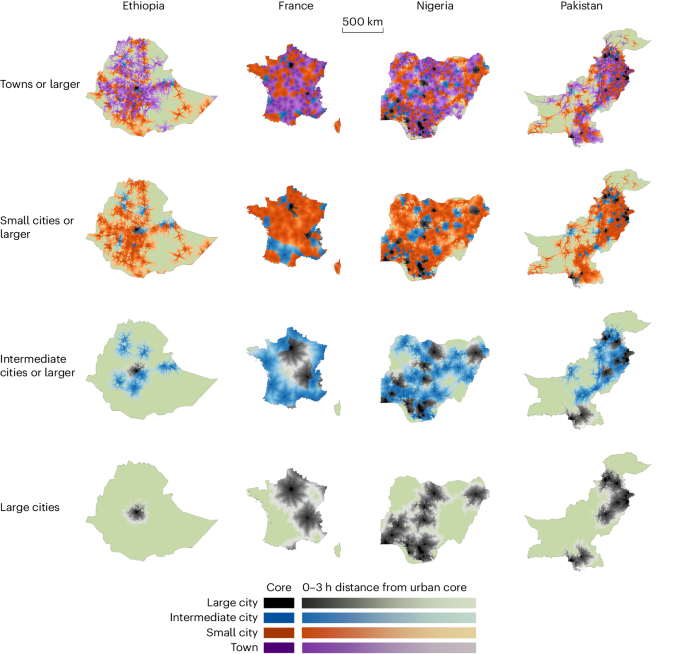
Higher-tier urban centers are assumed to provide all activities provided by lower-tier urban centers; therefore, their catchment areas are included in the lower tiers. Light green indicates locations that are more than 3 h away from an urban center.
Predictably, as the urban tier level increases so does the hinterland (light green), where people do not have access to the activities of the higher tier. What is interesting, however, is how this area changes by country. France and Ethiopia are a case in point. In France—a high-income country with adequate infrastructure—the catchment areas of three-tier city–regions cover almost the entire country and, consequently, probably almost all of its population. Conversely, in Ethiopia—a low-income country with weaker infrastructure—most areas are more than 3 h travel time from an intermediate or large city. It would, thus, appear that more specialized activities are less accessible in the latter country. The weaker infrastructure in Ethiopia is also responsible for the high number of primary city–regions (20) as a share of all urban centers in the country (358). Most of these primary city–regions (16) have a small city as the largest center of reference, indicating limited connectivity across the country. In comparison, France has fewer primary city–regions (4) relative to its total number of urban centers (223), and these are either intermediate or large cities (Extended Data Table 2 ).
Following Fig. 1 , Extended Data Fig. 2 indicates the population distribution—for the same four countries—across city–regions. It emerges that, while the distribution profile changes quite considerably, a sizeable proportion of the population belongs to city–regions—even for the limited 1 h travel time—with an intermediate or large city as reference to access specialized activities: 36% in France, 45% in Nigeria and up to 48% in Pakistan. This share increases to 47–55% if city–regions composed of a small city and towns are included, if slightly less specialized activities are needed (Supplementary Figs. A3.1 and A3.2 for 2 h and 3 h travel, respectively).
Ethiopia is the exception: 76% of the population lives more than 1 h away from any intermediate or large city. Multi-tier city–regions are also relatively limited and an option for only 36% of the population in Ethiopia, with the majority involving towns and small cities (21%). This is unsurprising, given the results in Fig. 2 and the fact that 21% cannot access any urban center within 1 h travel, and only 5% have access to a large city. However, despite low accessibility to intermediate and large cities, towns and small cities can be reached within 1 h travel by 70% of the population. Even in France, Nigeria and Pakistan—where large cities play a notable role and are better connected—we find city–regions with small or intermediate cities as the highest urban tier can engage twice or more of the population compared to city–regions with a large city as the highest tier. This supports the aggregate findings in Fig. 1 , whereby large cities were found to be less relevant than smaller ones in engaging populations. In sum, these national differences are, in part, not only due to how urban centers are spatially distributed but also due to the quality of the transport infrastructure connecting urban centers, which can considerably reduce travel time.
This research pioneers a comprehensive framework for representing city–regions worldwide (Figs. 3 and 4 ), providing insights into how societies organize around urban centers across multiple tiers. The analysis of over 30,000 urban centers reveals a predominance of multi-tier city–regions within a 1 h travel time—relevant for commuting—with single-tier city–regions being relatively rare. This interconnection is extensive, enabling over 5 billion people to access urban centers of 250,000 people or more within 1 h travel time. Expanding the travel time to three hours reduces fragmentation of catchment areas, leading to a decrease of both single-tier and multi-tier primary city–regions, making larger urban centers accessible to an even broader population for activities that necessitate travel times between 1 and 3 h.
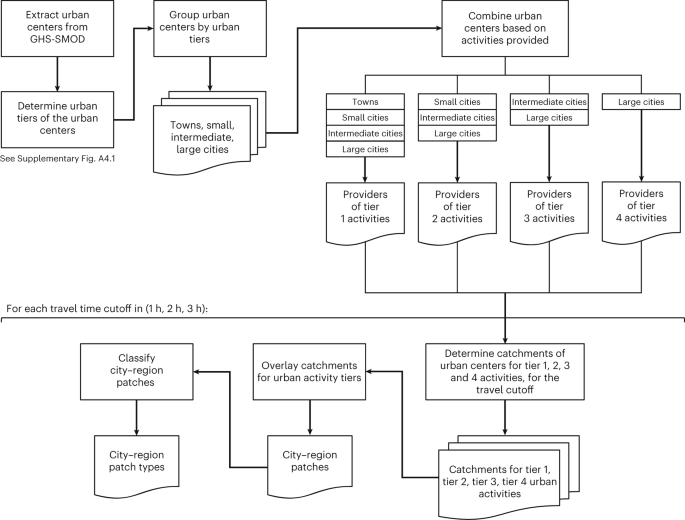
To categorize city–regions, we first classify reference urban centers by population size as a proxy for the range of activities they provide. An urban center in a higher tier is assumed to provide all activities provided by lower tiers. Next, we determine urban centers’ catchment area for each activity tier, within a specified travel time cutoff, and overlay these catchment areas to identify patches. Unique patch IDs are created for describing locations served by the same set of urban centers.
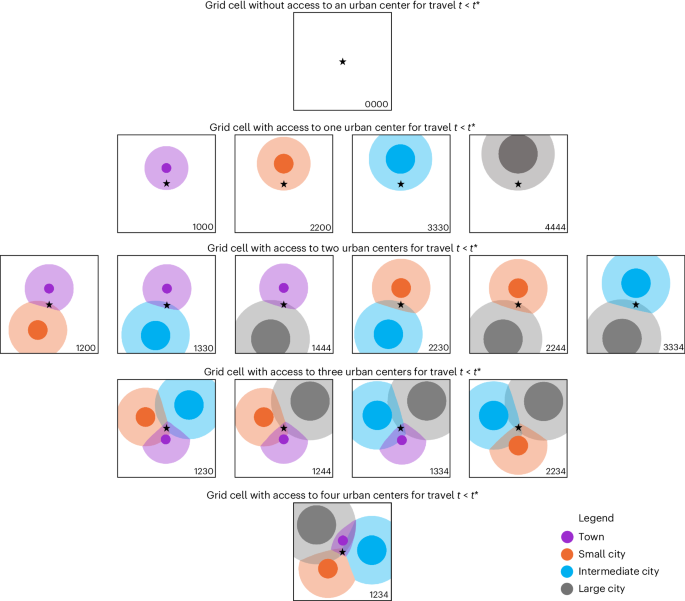
A patch is made up of locations served by the same set of urban centers within a specified travel time cutoff. As catchment areas (semi-transparent circles) of the different urban centers increasingly overlap, different types of patches are created. Each box shows a location indicated by a star and the type of patch it belongs to. The four-digit classification in each panel is to identify the type of patch based on the size of urban centers providing different levels of activity. The allowed values for each digit are 0–4. Thus, the four -digit value ‘0000’ expresses no access to urban activities, while ‘4444’ expresses that all four level of activities are provided by a large city (see Methods for details).
This research represents the first systematic worldwide delineation of city–regions across urban tiers, helping identify potential needs for infrastructure investment at country level. National results point to striking diversity in city–regions worldwide (Supplementary Annexes 1 and 3 ). Accessibility patterns vary greatly depending on geography, infrastructure and income level. The diversity of accessibility patterns worldwide calls for national urban policies tailored to unique geographic and income contexts rather than one-size-fits-all solutions often focusing on primate cities. We find intermediate and small cities and, in some cases, towns play an essential role in engaging populations outside urban cores, especially in low income countries. By overcoming infrastructure deficits that hinder regional integration, investments in these urban nodes and in tertiary roads and transport services radiating from them would promote inclusive economic development.
We acknowledge noteworthy caveats that would need to be addressed in future work. First, we assume that larger cities have more specialized activities; however, these may vary appreciably even within the same urban tier across different countries and regions. We also acknowledge that urban population alone does not fully capture economic composition, infrastructure, and political and cultural roles that differentiate urban centers. However, our approach can be a first step in considering these important dimensions. We also do not delve into how historical development patterns, resource distribution and governance have shaped present urban hierarchies and rural–urban linkages, warranting further exploration. On a positive note, we test the sensitivity of populations within different city–regions for different population datasets and find results to be robust (Supplementary Annex 5 ). In sum, the dataset is a valuable tool for regional planning in countries around the world, especially those where spatial analyses are currently not available. Future research can build upon this analysis and dataset by incorporating place-specific data and narratives to provide more grounded geographic insights into city–regions and sustainability.
Our hope is that this research—grounded in where people live and their physical access to urban centers of different sizes—will stimulate further debate on developing sustainable city–regions worldwide. The dataset can enhance socioeconomic research, regional planning and natural resource management by integrating with spatial socioeconomic data. For sustainable resource management, a coordinated regional approach can be important to plan land use, for provision of amenities, to manage watersheds and to mitigate pollution and ecological impacts transcending urban boundaries. Analyzing city–regions, including their primary and secondary urban centers, can offer insights into urban form, environmental sustainability and environmental amenities provision. The study also invites further examination into the resilience and strategic advantages of polycentric urban regions, where cities share influence without one overshadowing the others. Polycentric regions can be understood as a network of city–regions, each centered around a major hub, impacting governance and development policy considerably.
The rationale
The aim is to represent city–regions in a systematic manner that can help analyze the interaction between an urban core or cores and the surrounding periurban and rural areas. The historical reference for this approach is central place theory developed by Christaller in the 1930s 14 , which defines regions as areas of a certain market size distributed around a central place, representing a common catchment area for goods and services.
Our proposed city–regions, based on multiple catchment areas to access different urban tiers, follow more closely the conceptual characterization of city–region proposed by Parr 13 , whereby the city (C zone) consists of a continuous urbanized area with a population above a predetermined lower bound, surrounded by a territory (S zone). The characteristic of the S zone is that it is linked more with the C zone in question than with the C zone of some adjacent city–region due to its physical proximity to the former. The S zone can contain a rural population as well as an urban population, with the urban population of the S zone located in centers of varying size. As noted by Parr (p. 562) 13 ,
[…] within the S zone of a given CR [city–region] there might exist one or more urban centers of different size. For the territory surrounding such a secondary center, the overall level of interaction with this secondary center may well be greater than (though different from) that with the functionally more complex C zone of the CR. […] This suggests the existence of a primitive hierarchy of CRs in which one or more secondary CRs (each comprising a secondary C zone and a secondary S zone) are contained within the primary CR.
The approach taken is to detect systems of city–regions at the global level by identifying what locations are part of primary or secondary city–regions and mapping their S zones, which, to the best of our knowledge, has never been done systematically. This overcomes the critique that city–regions are politically constructed by including some cities and not others 26 . In our approach, any urban center with a population of 20,000 or more may be identified endogenously as part of a city–region (as primary or secondary C zone).
For the purposes of this paper, a city–region describes accessibility for a given travel time to urban activities and is identified by an ensemble of patches sharing the same urban center of reference; we distinguish between primary and secondary city–regions. We consider urban centers to be agglomerations with a population of 20,000 people or more, and the travel time used is from a location to the closest edge of an urban center. Here the term ‘activities’ encompasses both services and employment opportunities. This is because an individual might visit an urban center to access a service (for example, health center) or to commute to work.
In Table 1 , we summarize the terminology introduced in this article to facilitate the description of the workflow and algorithm. On a technical front, all spatial analysis required to delineate city–region patches was done by using code developed in Go, PHP and Python. QGIS was used for prototyping and visualization purposes. A script in PHP was used to perform the analysis identifying city–regions and providing summary information. All research code is available in the code repository of the paper.
Identifying catchment areas is an intermediate step in delineating city–regions
Urban centers.
We assume four urban tiers based on the population size of the urban centers and assign a unique identifier for each urban center and its catchment area. This was the starting point to create a global representation of city–regions based on the data for accessing each of the four tiers.
Basic activities are provided by all urban centers, of which the locations and populations have been derived starting from the Global Human Settlement Layer 27 , 28 . We process data so that each urban center has a unique number to identify it and its classification as a town, small, intermediate or large city (see Table 1 for a definition of each). To prevent bias when classifying urban centers into different levels, four different gridded global population datasets are utilized in this study, and decision rules are applied that aim at an unbiased classification considering information provided by all datasets (Supplementary Annexes 4 and 5 ).
Urban centers of four tiers are grouped into four different urban grids (locating urban centers on a map) based on activity levels. These urban grids are crucial because the city–regions we want to identify describe spatial distribution of availability of multiple levels of specialization of activities. Because higher-tier urban centers can provide all activities that can be provided by lower-tiers (recall Table 1 ), urban centers have to be grouped into four activity tiers representing the level of accessibility of activities: the first tier urban grid including all urban centers above 20,000 people with access to basic activities (for example, grocery shopping and primary education); the second tier urban grid including small, intermediate and large cities providing higher-level activities (for example, large supermarkets, secondary and higher education); the third tier including intermediate and large cities with more sophisticated and diversified activities (for example, broader employment opportunities and multiple specialized health care options); and the fourth tier including only large cities providing most specialized activities (for example, an airport).
Travel time
After classifying urban centers into our four urban tiers and creating the urban grids based on activity tiers, the next step in representing city–regions in a systematic manner is delineating the catchment areas around the urban centers based on representative metrics of accessibility. Physical accessibility based on travel time is one of the most common metrics used for this purpose. The calculations of travel time from an arbitrary location and its most proximate urban center apply a least-cost path algorithm that determines the fastest route over a travel cost surface, while keeping track of the destination urban center (see ref. 22 for details). This allows efficient delineation of the least-travel-time catchments around urban centers.
The travel cost grid derives from spatial datasets that represent the surface transport network (that is, roads, railroads, navigable rivers and other surfaces traversed by foot) and land-cover data, elevation and slope and international borders. The characteristics of these datasets allow the estimation of plausible travel speeds across different parts of the transport network, foot-based speeds over different types of terrain, speed adjustment factors associated with slope and extreme elevation and delays at international border crossings 22 . The resulting cost surface estimates the time required to cross each grid cell of the world’s surface. We use the most up-to-date global estimates of travel times available at a spatial resolution of about 1 km and build on earlier work that applied the method across a spectrum of settlement sizes 21 , 23 .
Catchment areas
For each urban grid, the catchment area around each urban center is determined based on minimum travel time that is calculated by using a grid-based minimum cumulative weighted distance method developed for the study that considers eight-connectivity on a spherical coordinate system with rolling at the International Date Line and the poles; hence, it enables a global travel time analysis. By using the urban centers as starting points and utilizing the travel cost grid for the unit travel cost at each grid cell (min km −1 ), the method generates global minimum travel time and minimum travel time sheds concurrently.
The catchment area of an urban center for a given activity tier is thus defined by the set of locations for which that urban center is closest for that tier. Should two or more urban centers be equally distant from a location, we assume that people will prefer to travel to a smaller city if it is sufficient for the level of activity that is required. This is based on intuition but also serves the purpose of keeping track of the smaller urban center for providing less specialized activities. As a result, each location has up to four urban center of reference, one for each activity tier level. Figure 2 presents sequentially the catchment areas for the different activity levels for four countries. It highlights how the catchment areas of urban centers expand as the urban tier level increases; hence, the activity level being sought increases, which follows from our definition that lower-tier urban centers cannot provide the more specialized activities of higher urban tiers.
City–region delineation and stratified access to activities
City–region patches.
To enable categorization of city–regions based on the number and types of their reference urban centers we first identify patches. The patches describe the spatial distribution of the availability of multiple levels of activities and by which urban centers they are provided. For this purpose, urban center identifications (IDs) of each overlapping catchment grid cell for four different activity levels are merged into a patch ID by using a variable-bit encoding method, which results in unique IDs for each unique set of urban centers providing different levels of activities (Supplementary Annex 4 ). Land-based locations worldwide are divided among over 100,000 unique patches. Figure 3 presents the workflow, starting from the identification of urban centers, delineation of catchments and aggregation into patches, which form the basis of city–regions.
We use a four-digit classification system to identify the types of patches based on the urban tiers of the related reference urban centers. The first digit is used to indicate the tier of the urban center for tier 1 activities (that is, basic activities), the second one for tier 2, the third for tier 3 and finally the fourth for tier 4 (that is, most specialized activities). The allowed values for each digit are 0–4, with 0 representing no access to activities (that is, no urban center is within reach of a patch to provide the indicated level of activity) and 1–4 representing the urban tier of the urban center providing the indicated level of activity. For the tiers, 1 indicates a town, 2 indicates a small city, 3 indicates an intermediate city and 4 indicates a large city. There are 16 possible type codes that range between 0000 (no access to activities) and 4444 (all activities provided by a large city), which are illustrated in Fig. 4 .
In Fig. 4 , each box shows a location indicated by a star and the patch it belongs to, which can be viewed as part of a city–region. Urban centers are shown with solid circles with different colors and increasing diameters from town to large city. The exception being the top box where no urban center is accessible within a given travel time. The catchment areas are then shown with semitransparent circles of the same color, which assumes for visual simplicity a uniform unit travel-time grid. Hence, the distance between the outer boundaries of the urban centers and the edge of their corresponding catchment areas are identical for a specific travel time cutoff ( t *). As catchment areas of the different urban centers increasingly overlap, different types of patches are created. The code at the bottom-right of each box indicates the type of the patch where the star is located. As illustrated in Fig. 4 (and recalling Table 1 ), patches can be of four types: single-tier (second row; codes 1000, 2200, 3330 and 4444), two-tier (third row; codes 1200, 1330, 1444, 2230, 2244 and 3334), three-tier (fourth row; codes 1230, 1244, 1334 and 2234) and four-tier (fifth row; code 1234). As shown in Fig. 4 , three-tier and four-tier patches encompass two-tier patches in their vicinity, reflecting a more complex urbanization pattern.
For illustration purposes, a four-digit code of 2230 shows that for all grid cells in the patch the closest urban center is a small city (2), which provides both tier 1 and tier 2 activities, but there is also an intermediate city (3) within a given travel time cutoff providing more specialized activities. The code also indicates that there are no large cities within travel time cutoff. If there were a large city, then the code would be 2234, or possibly 2244 if the large city were closer than the intermediate city or 4444 if it were the closest urban center. If there were a town closer than the small city, then the code would be 1230.
City–regions
By identifying patches associated with the same highest-tier urban center, we delineate the boundaries of that center’s city–region. The resulting city–regions are mutually exclusive from each other for each activity level and have a global coverage for different travel time cutoffs. The travel time cutoffs used in our analysis are 1 (to reflect a commuting cutoff), 2 and 3 h (to reflect accessing activities that require less frequent trips), but it is straightforward to select different cutoffs. The patch IDs are persistent between different travel time cutoffs, that is, the same patch ID is assigned to the same set of urban centers of various tiers, which allows tracking of the change of patch, hence, city–region, extents depending on the travel time cutoffs.
In the final step, we determine whether an urban center is the apex of a primary city–region or whether it belongs to a secondary city–region (first branching in Extended Data Fig. 3 ). When an urban center serves as a reference to locations in just one single patch it is classified as a single-tier city–region; it is not part of the catchment area of a larger urban center, and no lower-tier urban centers are accessible within the travel time cutoff. For secondary city–regions we distinguish between satellite ones, which basically just gravitate around a larger urban center, and nested ones, whose catchment areas overlap with those of lower-tier centers. An example of primary and secondary city–regions for the area surrounding Birmingham is given in Supplementary Fig. A4.2 .
For each city–region, the country where the city–region is located is identified by using the Global Administrative Areas Database 29 . For city–regions that spread to multiple countries, the country with the largest proportion by surface area is considered as country of the city–region. To enable city–region population statistics at country level, separate population values are also calculated for each country segment of multicountry city–regions.
Similar to the urban centers, the population of each city–region is calculated by using the GHS-POP, Gridded Population of the World, LandScan and WorldPop population datasets for all three travel time cutoffs. The results are presented here only for GHS-POP (for a comparison across population datasets, see Supplementary Annex 5 ).
By using this data, we compute the following variables: (1) area and population of each urban center, (2) area and population of the ‘proximate catchments’ that are less than 1 h from the edge of an urban center (not including the area of the urban core), (3) area and population that are up to 2 h away from an urban center (not including the area of the urban core) and (4) area and population of the ‘full catchment’, which include areas that are up to 3 h away from an urban center (not including the area of the urban core).
When computing the number of city–regions of different types, we calculated different city–region types separately for each tier to avoid double counting. Some high-tier city–regions may contain subareas (patches) associated with lower tiers that could be wrongly counted as separate systems; we adjusted for this by accounting for secondary city–regions embedded within higher ones. This provided the number of primary city–regions associated with different travel time cutoffs to reach the urban centers of reference (Table 1 ).
Our approach is an advancement in several respects relative to the URCA 1 methodology that most closely aligns with ours: it allows locations to reference multiple urban centers across four tiers, introduces precise travel time measurements instead of broad ranges, tracks the specific urban center and its city–region for each location and uses four population datasets to minimize bias in population estimates for city–regions (Supplementary Annex 4 ). Our algorithm for identifying city–regions also eliminates the prerequisite of predefining a hierarchy based on urban center size within each travel time range, a constraint in the URCA approach since it limited each location to a single urban center of reference. Furthermore, our approach is also complementary and relevant for a polycentric perspective focusing on an area containing a cluster of urban centers, none of which has a pronounced dominance over the others 30 , 31 . Polycentric regions can be viewed as a series of city–regions—each based on a major center of the supposed polycentric urban region—providing access to different urban tiers within each 31 .
In spite of the innovations introduced by our approach, there are key assumptions that need to be highlighted. The number and types of city–regions identified will be sensitive to the travel time cutoff adopted and to the population range prespecified for the four urban tiers. The first issue can be easily adjusted by specifying different travel time cutoffs. So, for example, it is straightforward to calculate a set of results for city–regions delineated by a 90 min travel time instead of the ones used in the paper. On the other hand, changing the population ranges for the urban tiers is possible but would essentially entail adjusting the code to construct a new dataset ex novo.
Our study establishes a global city–region classification using uniform criteria to ensure broad applicability and comparability, albeit at the expense of contextual factors. By defining urban tiers through population thresholds and physical accessibility, we offer a first-step approximation to global patterns, acknowledging the inevitable loss of local geographic nuances shaped by history, culture, economics and environment. This framework aims to inspire further research into urban–rural connections and regional connectivity, offering our dataset as a foundation to progress from broad patterns to detailed, localized analyses.
Reporting summary
Further information on research design is available in the Nature Portfolio Reporting Summary linked to this article.
Data availability
The global spatial dataset of city–regions for different travel time cutoffs is available in a public repository (check README.md). In the repository we also provide, for each population dataset, a tool in Excel that can generate the distribution of populations across types of city–region (shown in Fig. 1 and Extended Data Fig. 2 of this paper using the GHS-POP version) for any country in the world. All files are available on the City–Region System Toolbox from Zenodo via https://doi.org/10.5281/zenodo.11187634 (ref. 32 ). The input data used for the analysis can be found in Supplementary refs. 1 and 3–6 .
Code availability
Scripts in Python and PHP were used to preprocess input data. They are available via GitHub at http://github.com/ITC-CRIB/city-regions . Minimum cumulative weighted distance and catchment delineation code is available via GitHub at https://github.com/ITC-CRIB/globetrotter . Final data cleaning and analysis was done in Microsoft Excel (commercial). All maps were made in QGIS 3.22 and R.
Cattaneo, A., Nelson, A. & McMenomy, T. Global mapping of urban–rural catchment areas reveals unequal access to services. Proc. Natl Acad. Sci. USA 118 , e2011990118 (2021).
Article Google Scholar
Rodríguez-Pose, A. The rise of the ‘city–region’ concept and its development policy implications. Eur. Plan. 16 , 1025–1046 (2008).
Moisio, S. & Jonas, A. E. in Handbook on the Geographies of Regions and Territories (eds Paasi, A. et al.) 285–297 (Edward Elgar Publishing, 2018).
Acuto, M., Parnell, S. & Seto, K. C. Building a global urban science. Nat. Sustain. 1 , 2–4 (2018).
Keith, M. et al. A new urban narrative for sustainable development. Nat. Sustain. 6 , 115–117 (2022).
Schläpfer, M. et al. The universal visitation law of human mobility. Nature 593 , 522–527 (2021).
Hutchings, P. et al. Understanding rural–urban transitions in the Global South through peri-urban turbulence. Nat. Sustain. 5 , 924–930 (2022).
Liotta, C., Viguié, V. & Creutzig, F. Environmental and welfare gains via urban transport policy portfolios across 120 cities. Nat. Sustain. 6 , 1067–1076 (2023).
Dijkstra, L. et al. Applying the degree of urbanisation to the globe: a new harmonised definition reveals a different picture of global urbanisation. J. Urban Econ. 125 , 103312 (2021).
Moreno-Monroy, A. I., Schiavina, M. & Veneri, P. Metropolitan areas in the world. Delineation and population trends. J. Urban Econ. 125 , 103242 (2020).
Cattaneo, A. et al. Economic and social development along the urban–rural continuum: new opportunities to inform policy. World Dev. 157 , 105941 (2022).
Nagendra, H., Bai, X., Brondizio, E. S. & Lwasa, S. The urban south and the predicament of global sustainability. Nat. Sustain. 1 , 341–349 (2018).
Parr, J. Perspectives on the city–region. Reg. Stud. 39 , 555–566 (2005).
Christaller, W. Die zentralen Orte in Süddeutschland (the Central Places in Southern Germany) (Gustav Fischer, 1933).
Mulligan, G. F., Partridge, M. & Carruthers, J. I. Central place theory and its reemergence in regional science. Ann. Reg. Sci. 48 , 405–431 (2012).
Kompil, M., Jacobs-Crisioni, C., Dijkstra, L. & Lavalle, C. Mapping accessibility to generic services in Europe: a market-potential based approach. Sustain. Cities Soc. 47 , 101372 (2019).
Milbert, A., Breuer, I., Rosik, P., Stępniak, M. & Velasco, X. Accessibility of services of general interest in Europe. Romanian J. Reg. Sci. 7 , 37–65 (2019).
Google Scholar
Jacobs-Crisioni, C., Kompil, M. & Dijkstra, L. Big in the neighbourhood: identifying local and regional centres through their network position. Pap. Reg. Sci. 102 , 421–457 (2023).
Post, A. E. & Kuipers, N. City size and public service access: evidence from Brazil and Indonesia. Perspect. Politics 21 , 811–830 (2023).
Austin, S. et al. Access to urban acute care services in high- vs. middle-income countries: an analysis of seven cities. Intensive Care Med. 40 , 342–352 (2014).
Weiss, D. J. et al. Global maps of travel time to healthcare facilities. Nat. Med. 26 , 1835–1838 (2020).
Weiss, D. J. et al. A global map of travel time to cities to assess inequalities in accessibility in 2015. Nature 553 , 333–336 (2018).
Nelson, A. et al. A suite of global accessibility indicators. Sci. Data 6 , 266 (2019).
Duranton, G. Classifying locations and delineating space: an introduction. J. Urban Econ. 125 , 103353 (2021).
OECD and European Commission. Cities in the World: A New Perspective on Urbanisation (OECD, 2020).
Harrison, J. & Heley, J. Governing beyond the metropolis: placing the rural in city–region development. Urban Stud. 52 , 1113–1133 (2015).
Schiavina, M. et al. GHSL Data Package 2022—Public Release GHS P2022 (Publications Office of the European Union, 2022).
Schiavina, M., Freire, S. & MacManus, K. GHS-POP R2022A—GHS population grid multitemporal (1975–2030). Joint Research Centre Data Catalogue https://doi.org/10.2905/D6D86A90-4351-4508-99C1-CB074B022C4A (2022).
Hijmans, R. Global Administrative Areas Database (GADM) Version 4.1 (GADM, 2022); https://gadm.org/
Parr, J. The polycentric urban region: a closer inspection. Reg. Stud. 38 , 231–240 (2004).
Parr, J. B. The regional economy, spatial structure and regional urban systems. Reg. Stud. 48 , 1926–1938 (2014).
Cattaneo, A. et al. Worldwide delineation of multi-tier city–regions [data set]. Zenodo https://doi.org/10.5281/zenodo .11187634 (2024).
Download references
Acknowledgements
We would like to thank P. D’odorico, I. Soloaga, K. Stamoulis, K. Svobodova and C. Tuholske for feedback provided in earlier drafts of this paper. The views expressed in this article are those of the authors and do not necessarily reflect the views or policies of the institutions they are affiliated with.
Author information
Authors and affiliations.
Food and Agriculture Organization of the United Nations, Rome, Italy
Andrea Cattaneo, Theresa McMenomy & Sara Vaz
Faculty of Geo-Information Science and Earth Observation, University of Twente, Enschede, the Netherlands
Serkan Girgin, Rolf de By & Andrew Nelson
You can also search for this author in PubMed Google Scholar
Contributions
A.C. and S.G. jointly conceived and coordinated the study. S.G. developed the algorithm needed to implement the approach and test its robustness, supported by A.N. and R.d.B. A.C. developed the petal diagrams reporting population distribution. All authors contributed equally to analyzing and interpreting the results and drafting the paper.
Corresponding author
Correspondence to Andrea Cattaneo .
Ethics declarations
Competing interests.
The authors declare no competing interests.
Peer review
Peer review information.
Nature Cities thanks Remy Sietchiping, Sumeeta Srinivasan and the other, anonymous, reviewer(s) for their contribution to the peer review of this work.
Additional information
Publisher’s note Springer Nature remains neutral with regard to jurisdictional claims in published maps and institutional affiliations.
Extended data
Extended data fig. 1 percentage of population that has access to more than one urban tier based on travel time..
Note: This Figure is derived from information contained in the petal-diagram of the type presented in Fig. 1 of the manuscript, when computed for the respective countries (see Fig. 1 and Figs. A3.1 and A3.2 for Ethiopia, France, Nigeria, and Pakistan). They reflect the sum of the bold values in rows B, C and D (the share of the population in locations whereby the closest urban centre is a town, small city, intermediate city, respectively) and subtract the blue values in those rows (the share of population with access to just one urban centre across the given travel time).
Extended Data Fig. 2 Population distribution across different types of city–regions for Ethiopia, France, Nigeria, and Pakistan within 1-hour travel time, 2020.
Legend: The figure presents the share of population living in, or within a certain travel time of, the closest urban centre, broken down by size of the urban centre. It is divided into four columns, each of which sums to 100% and determines the share of the population living in the core or within a certain time range – 1, 2 or 3 hours – of an urban centre, whether a town, small, intermediate, or large city. Row A refers to the share of population living in a rural area with no surrounding urban centre, given travel time. Rows B–E apply to locations whereby the closest urban centre is a town, small city, intermediate city, or large city, respectively. Moving from left to right, values increase with travel time as they incorporate the population in preceding columns. To illustrate, the population considered within 1-hour travel time also includes those living in the core. The petal diagrams in the grey boxes differentiate the share of population with access to different urban tiers. Percentages in blue refer to the share of population with access to just one urban centre within the given travel time.
Extended Data Fig. 3 Determination of primary and secondary city–regions.
Note: In order to classify city-regions as primary, secondary, and satellite city-regions, the following analysis is performed. For each city-region, the highest-tier urban centre of all patches of the city-region are enumerated. For example, for a city-region that is composed of five patches, five highest-tier urban centres are listed. If all highest-tier urban centres of the city-region is equal to the urban centre of the city-region, then the city-region is classified as a primary city-region. This indicates that the city-region does not overlap with a city-region of a higher-tier urban centre. If at least one highest-tier urban centre is equal to the urban centre of the city-region, but there are also other highest-tier urban centres, then the city-region is classified as a secondary city-region. This indicates that the city-region overlaps with one or more city-regions of higher-tier urban centres. Finally, among secondary city-regions, we distinguish between satellite city–regions, which have no lower tiers embedded below it, and nested city–regions that instead do overlap with lower tiers.
Supplementary information
Supplementary information.
Supplementary Annexes 1–5, Discussion, Tables A1.1, A4.1, A5.1 and A5.2, and Figs. A2.1, A3.1, A3.2., A4.1, A4.2, A5.1 and A5.2.
Reporting Summary
Rights and permissions.
Open Access This article is licensed under a Creative Commons Attribution 4.0 International License, which permits use, sharing, adaptation, distribution and reproduction in any medium or format, as long as you give appropriate credit to the original author(s) and the source, provide a link to the Creative Commons licence, and indicate if changes were made. The images or other third party material in this article are included in the article’s Creative Commons licence, unless indicated otherwise in a credit line to the material. If material is not included in the article’s Creative Commons licence and your intended use is not permitted by statutory regulation or exceeds the permitted use, you will need to obtain permission directly from the copyright holder. To view a copy of this licence, visit http://creativecommons.org/licenses/by/4.0/ .
Reprints and permissions
About this article
Cite this article.
Cattaneo, A., Girgin, S., de By, R. et al. Worldwide delineation of multi-tier city–regions. Nat Cities 1 , 469–479 (2024). https://doi.org/10.1038/s44284-024-00083-z
Download citation
Received : 09 January 2024
Accepted : 16 May 2024
Published : 26 June 2024
Issue Date : July 2024
DOI : https://doi.org/10.1038/s44284-024-00083-z
Share this article
Anyone you share the following link with will be able to read this content:
Sorry, a shareable link is not currently available for this article.
Provided by the Springer Nature SharedIt content-sharing initiative
Quick links
- Explore articles by subject
- Guide to authors
- Editorial policies
Sign up for the Nature Briefing newsletter — what matters in science, free to your inbox daily.
Lando Norris: winning means more F1: Beyond The Grid
This episode is brought to you by GetYourGuide – the app to discover and book unforgettable travel experiences. Choose from over 100,000 things to do in one app, including an exclusive tour of the McLaren Technology Centre. Discover, book and make memories this summer at GetYourGuide.co.uk Lando Norris’ first F1 victory has changed everything. Speaking to Tom Clarkson before the 2024 Austrian Grand Prix, the McLaren driver explains why winning means so much more, and why racing for the lead feels so different. Lando looks back at races in Canada and Spain he feels he could have won, and gives a detailed breakdown of what he could have done differently. He also talks about racing Max Verstappen, and why he feels he still has to prove himself against champion drivers. Plus, Lando looks ahead to this weekend’s British Grand Prix at Silverstone. He remembers his first experience of a Formula 1 Grand Prix, how it felt to lead the 2023 race, and imagines taking victory in front of his home fans.
- Episode Website
- More Episodes
Top Podcasts In Sports
More by formula 1.

IMAGES
COMMENTS
You can count on the IATA Travel Centre as your trusted, centralized source for the latest international travel requirements. It is the most accurate source available, drawn on a comprehensive database used by virtually every airline, and information gathered from over 1,000 official sources worldwide. In addition, the IATA Travel Centre can ...
iatatravelcentre.com - IATA - Personalised Passport, Visa & Health ...
Cancun & Tulum. Explore Vibrant Natural Wonders, Ancient Mayan Sites, and Relax in Amazing Beach Resorts! Inquire now from $1699 pp. Save $972pp. 5 Nights. From $3449 pp.
[email protected] Founded in 1993, Travel Centre of Gainesville is a true "Bricks and Mortar" Professional Travel Agency where you can come in and sit down to plan that trip, whether a two-day business trip or the Bucket List Trip of a Lifetime!
Travel Center UK is a British travel agent that offers cheap flights, holidays and hotel deals to various destinations around the world. Whether you want to explore the culture of China, the beaches of Maldives or the wildlife of Africa, Travel Center UK has the perfect package for you. You can also read their blog for tips and insights on different airlines and destinations. Book your dream ...
Plan your trip with IATA Travel Centre, the ultimate source of personalised passport, visa and health travel documentation advice for any destination.
Find out what documents you need to travel anywhere in the world with IATA Travel Centre. Get personalised advice on passport, visa and health requirements for your destination.
Travel Centre. Have you ever really travelled? We share the latest travel news, tips, and stories, right here at the home of travel - Passport Travel.
Add Your Place & Gain Customers from Our Platform. Discover the best restaurants and places with MoonFruit. Use our unique rating and review sorting system to find the perfect spots for your next journey. Get reliable advice and reviews from our community.
Beryl, the first hurricane of the 2024 Atlantic season, intensified to an extremely dangerous Category 4 hurricane with maximum sustained winds of 130 mph Sunday morning, as it made its way toward ...
Atlantis Dubai & Siyam World Maldives. 10 Nights. A luxurious getaway to two iconic destinations. From $5399 pp. Save $875pp.
You're the centre of our centre. When you book with us, you know you're booking with the best in the business. Find cheap flights, hotels, packages, cruises and tours from Australia's leading travel agents. With the widest choice and 24/7 customer care. Book or enquire today.
Reply from Travel Centre US. Jun 12, 2024. Hi Katie, Many thanks for your amazing words of appreciation and your positive feedback on our Service. We are delighted to know that the service provided by William met your expectations.
Hurricane Beryl marks rare start to season 01:50. Hurricane Beryl, which has been lashing the southeastern Caribbean with life-threatening winds and flooding this week, made history before it even ...
When you book with us, you know you're booking with the best in the business. Book flights, vacation packages, tours, and cruises with Flight Centre. Flights to Hawaii, Las Vegas, Mexico, Canada & more!
Travel Centre being in the industry for 37 years, strives to give you the best booking experience for your travel needs. Whether you prefer traveling to a specific destination or a multicity vacation, we have all the options you are looking for at your fingertips! Starting from the point of inquiry till the date you return from vacation, our ...
The happiest place on Earth will be so much easier to get to from next year. The Disney Adventure cruise will set sail from Singapore's Marina Bay Cruise Centre beginning in 2025, for three- and four-night voyages, for at least five years, announced Disney Cruise Line on Wednesday (Jun 26).
Travel Centre US, Jersey City, New Jersey. 21,580 likes · 1,218 talking about this. We offer deals for flights, hotels & vacations.
At Switzerland Travel Centre we create tailor-made trips using our unparalleled knowledge of the broad range of different experiences available in this beautiful country. Discover Switzerland's spellbinding scenery on some superb railway journeys, such as the world-famous Glacier Express or the fantastic Bernina Express.
Great experience with him and looking forward to this trip. My big appreciation for such a nice experience. Date of experience: March 13, 2024. Useful. Share. Reply from Travel Centre US. Mar 18, 2024. Hi Yolinda, Many thanks for your amazing words of appreciation and your positive feedback on our Service.
Travel Centre is the sister company of Travel Center UK. Both companies were born as a result of the 37-year excellency of their parent company, Moresand, one of the highly reputed travel agencies in the UK. We work with several international airlines, nonaligned, to provide unbiased advice on making your journey better.
Glencar Luxury Villas is the ultimate 5 star adults only property on Norfolk Island. With awe inspiring views over the countryside towards Mount Pitt and the ocean, these One Bedroom Villas are perfect for relaxation and escape from the every day. From $4079 pp twin share. ON SALE - Heritage House Stay!
Hurricane Beryl has become an "extremely dangerous" Category 4 storm as it inches closer to the Windward Islands, bringing life-threatening winds and storm surge to the Caribbean, the National ...
By Melanie Earley of RNZ. Families with school-aged children are choosing not to take their children out of school to travel, Flight Centre data has shown, as the Government cracks down on truancy
Guided group tour. Swiss Coupon Pass. Discover our Swiss Coupon Pass for 2024 with 100 exclusive 2 for 1 offers and save up to CHF 4'500.-. Take advantage of 50% discount on many offers from gastronomy, leisure and public transport. Brochure 2024.
Start Saving. with the TA Fleet Universal Card. Sign up today and enjoy a one-card solution for fuel, truck service, DEF, cash, ATM, scales, showers, and parking across 16,000 truck stops. Plus, get discounts on commercial fuel and truck service at TA, Petro, and TA Express locations while earning rewards through the UltraONE loyalty program.
Urban centers are pivotal in shaping societies, yet a systematic global analysis of how countries are organized around multiple urban centers is lacking. We enhance understanding by delineating ...
Zillow has 2 photos of this $474,900 3 beds, 3 baths, 1,904 Square Feet single family home located at 643 Centre St LOT 237, Pleasant View, TN 37146 built in 2024. MLS #2663020.
Members will enjoy priority benefits and enhanced redemption on both airlines
This episode is brought to you by GetYourGuide - the app to discover and book unforgettable travel experiences. Choose from over 100,000 things to do in one app, including an exclusive tour of the McLaren Technology Centre. Discover, book and make memories this summer at GetYourGuide.co.uk Lando…